















As we navigate the colder months, join us in turning our focus inward and nurturing our bodies and minds with the warmth of self-care.
In our recipe section, we delve into the art of crafting hearty, nourishing dishes that not only provide comfort and warmth, but also support immunity and overall well-being.
Gut health remains a cornerstone of holistic wellness, particularly at times when we require a bit of extra immune support. One of my favourite of our food articles for the season is an exploration of the benefits of fermentation - not only for gut health, but for overall well-being and even natural beauty.
In our sleep support segment, we shine a spotlight on some of our tried-and-tested natural solutions. Then we draw on inspiration from the ancient healing tradition of Ayurveda to help you thrive – both physically and mentally - every day.
In honour of Women’s Month in August, we're proud to feature articles that empower and educate women on navigating their health journeys with confidence and vitality, addressing topics ranging from hormonal balance to psychological sovereignty.
On the beauty front, winter skincare takes centre stage as we explore the importance of adapting our routines to combat the harsh effects of the cold weather and dry air, maintaining natural radiance throughout.
At home, aromatherapy is our focus as we explore the therapeutic benefits of essential oils in promoting relaxation, relieving stress, and supporting overall well-being in your favourite spaces.
Finally, as many of us navigate the demands of work at this busy time of year, we offer practical tips for maintaining balance and vitality in the workplace.
As you immerse yourself in the pages of this magazine, may you find inspiration, guidance, and empowerment to embrace the winter months in a way that best serves your body, mind, and life.
Warm wellness wishes,
The perfect Good Health combo for busy South African families.

Whether you’re young and growing and sporty and active – or working too hard and feeling the effects of lifestyle stress –or slowing down and needing help with painful joints – the Good Health blue range has something for all the family.
Organic Magnesium
Ultra – a high strength, easily absorbable
Magnesium formula that helps relax muscles, tension and stress.
• Muscle cramps
• Nervous tension & anxiety
• Athletes
• PMS
• 1-a-day formula
• Vegetarian friendly
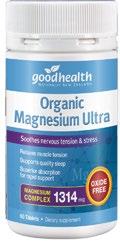
Magnesium Sleep Support
– provides calming herbs with Magnesium to support healthy sleep patterns helping you to switch-off at night.
• Sleep Support
• Interrupted sleep patterns
• Stress & nervous tension
• Overactive mind –can’t switch off at the end of the day
• Worry & restlessness
• Vegan & vegetarian friendly


B-Stress Free™ – the ultimate stress 1-a-day formula, combining necessary B vitamins and therapeutic dose sedatory herbs to help you through your stressful day and set you up for a better night’s sleep.
• Tiredness & fatigue
• Has a calming effect on mood
• Improving quality of sleep
• Healthy nerves & nervous system
• Supports chronic stress
• Vegan & vegetarian friendly
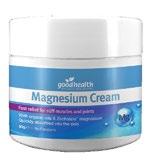
Magnesium Cream – a luxurious feeling, high absorption cream for tired muscles and joints. Combines 9 essential oils, 6 herbal extracts and Zechstein™ Magnesium for effective pain relief.
• Muscle aches
• Joint aches
• Cramps & twitches
• Fibromyalgia, migraines & headaches
• Tight muscles
• Vegan & vegetarian friendly



6 EDITOR’S CHOICE
From herbal healers and winter essentials to natural performance enhancers and protein-rich breakfasts, our editor shares her must-have products for the season.
8 LET’S GET SOCIAL
We share some of your Wellness moments, and reward our latest favourite.
10 FROM OUR CEO
Stuart Sinclair shares what’s sprouting at Wellness this quarter.
12 MY JOURNEY TO WELLNESS
Cover model Lauren Helen shares how she lives life well.
14 WELLNESS TRENDS WE’RE WATCHING
From edible skincare to probiotics for PMS, we explore the latest and greatest in health and wellbeing.
42 WIN WITH WELLNESS
We’ve got a great lineup of giveaways in this edition! Think natural beauty solutions, healthy gummies, immunity essentials, and more.
92 STORE DIRECTORY
Find your nearest Wellness Warehouse and enjoy living life well with us
94 ON OUR BOOKSHELF
Age well, embrace change, celebrate curiosity, and more with our current favourite reads.
18 WARM MARKET SALAD
From Welcome to My Table by Siba Mtongana
20 FERMENTATION
For health, skincare, and sustainability
AMAZING AMARANTH
What makes this ancient grain a great addition to your daily diet
A PLANT-BASED PRESCRIPTION For type 2
EAT THE RAINBOW
Join the challenge to eat 30 different plants a week
Our expert shares her top herbal helpers.
To get the most out of your supplements
46 REST EASY Exploring natural sleep solutions
50 BIOHACKING FOR WOMEN The small tweaks that can make a big difference 54 THE POWER OF INTERCONNECTION
Understanding the human experience as greater than the sum of its parts

your skin
60 WINTER MASKS Natural nourishment to protect your skin during the colder months
SCALP CARE Is the new hair care
AROMATHERAPY
every space and mood
72 ARE YOU OVER-FEEDING YOUR PET? A veterinary nurse is here to help you answer.

74 STRESS & SEX
How your intimate life can affect all aspects of your wellbeing
self-worth 70 SUPPORTING MOM The importance of post-natal care for new mothers
76 BUILDING PSYCHOLOGICALLY SAFE SPACES Safeguarding your workplace against bullying 78 FINDING PURPOSE
is



I’m always on the lookout for gluten-free snacks, and Schär’s range has been a delightful discovery. The Chocolate O's are a standout, perfectly mimicking classic sandwich cookies with a rich chocolate filling that satisfies my sweet tooth without the gluten. Their Crackers are impressively crisp and versatile - great on their own or paired with cheese. The Salinis, small pretzel-like bites, are my go-to for a crunchy, savoury snack, while the Digestive Choc biscuits offer a wonderful blend of wholesome, oat-y goodness with a luscious chocolate coating. Each product showcases Schär's commitment to quality and taste, making gluten-free snacking a pleasure rather than a compromise.
As an avid aromatherapy enthusiast, I was thrilled to receive the new Essential Oil Collection from Flora Force . I place a drop of the soothing lavender on my pillow before bedtime, and add some of the eucalyptus to my shower when it’s time to wake and face the day. I diffuse the bergamot when I’m in need of a bit of a mood boost, and the rosemary during times of focus. The lemongrass is my favourite to add to a burner when cleaning the house, and the rose geranium is my go-to for when practising my at-home self-care. While I couldn’t resist keeping the collection for myself, it would make for a beautifully-packaged, thoughtful gift!


Prime Day and Prime Night by Prime Self have become indispensable pillars in my daily routine, guiding me through the ebbs and flows of productivity and rest. Prime Day ignites my mornings with a sustained surge of energy, free from the crash and jitters, while its blend of electrolytes and adaptogens keep me hydrated and resilient against stressors for a focused and vibrant day. After all the action, Prime Night steps in to promote relaxation with its symphony of recoverypromoting, sleep-inducing ingredients for a restorative slumber that leaves me invigorated and primed for the challenges of the next day.



Simply Bee 's Propolis Serum has become an indispensable part of my skincare routine, transforming my complexion with its potent blend of natural ingredients. Infused with the healing power of propolis, it works wonders in soothing inflammation, reducing redness, and promoting overall skin health. With each application, I feel a luxurious veil of hydration enveloping my skin, leaving it soft, supple, and radiant. What sets Simply Bee apart is their unwavering commitment to purity and sustainability, ensuring that every drop of the serum is imbued with the wholesome goodness of nature. Whether used as a daily treatment or as a targeted solution for troubled areas, this one is a true skincare gem that delivers visible results over time.



Septoguard 's Lozenges, Syrup, and Tablets have become my trusted allies in warding off seasonal threats and maintaining robust health throughout the winter months. Whether I'm facing a scratchy throat, sniffles, or a full-blown cold, they deliver targeted relief from symptoms, plus immune support to boot. The Lozenges provide instant comfort, soothing irritation with their blend of healing herbs and supportive vitamins. The Syrup is a deliciously sweet way to bolster my defences, with its blend of natural extracts and immune-boosting nutrients. Meanwhile, the Tablets provide a convenient on-the-go solution, packed with all the essential vitamins and minerals I need to fortify my immune system.




As someone who values both nutrition and convenience in equal measure, Macro Mixes Protein Oats and Instant Protein Porridge have revolutionised my breakfast routine. These ingenious blends effortlessly marry the hearty satisfaction of oats with the muscle-building power of protein, creating a breakfast powerhouse that fuels my day with sustained energy and vitality. Whether I opt for the comforting warmth of Protein Oats on a chilly morning or the quick-fix convenience of Instant Protein Porridge on busy days, I'm consistently impressed by the delicious taste and satiating power of these blends.




I’ve recently taken to creating functional supplementation stacks, combining ingredients that work synergistically to address a number of different aspects of my daily health. A current trio I’m taking each morning comprises Alvega-3 , Siberian Ginseng , and BioVive from Flora Force . In the face of life’s daily stressors, the DHA in the Alvega-3 supports my brain and nervous system health; the ginseng is a powerful adaptogen to help build resilience in my body and mind; and the B vitamins are invaluable companions in responding to physical and mental challenges. A strong way to start the day!


The transformative synergy between Viridian ’s L-theanine and Peak Focus supplements has helped me to bring both focus and calm to my busy work day. The combination of L-theanine's calming effects and Peak Focus's cognitive enhancement properties creates an ideal balance for navigating the challenges of multi-tasking, deadlines, and unexpected challenges. Whether tackling complex assignments or enduring marathon days at the office, this duo offers me a sustained clarity of mind, bolstering focus and productivity. For anyone grappling with brain fog or buckling beneath their daily cognitive demands, this tandem may provide a welcomed reprieve, fostering mental acuity and sharpening concentration without the jitters.




FIND THE PRODUCTS IN STORE, OR SCAN THE QR CODE TO SHOP THEM ONLINE


This winter, I’m stocking my home first aid kit with Wellness Tinctures . The Pelargonium and Cold & Flu Remed y are my allies when the sniffles strike, while the Echinacea and Olive Leaf help to keep me shielded against further infection. The antibacterial and anti-diarrhoeal Goldenseal is a digestive aid I draw on often. When I’m in need of a bit of energy, I reach for the Siberian Ginseng , while the Valerian provides some much-needed calm and support during times of stress. Lastly, my favourite – the gentle Sleep Aid contains soothing passionflower and valerian to assist in promoting the relaxation I need for a good night’s rest.

We hope you enjoy using your R500 shopping voucher to stock up on more of your favourite Wellness goodies!

@fariedamartin_the_mua

@christyann.fit

@agoodlife_nutritioncoach
Share your Wellness moments with us on social media and stand a chance to WIN a R500 voucher to spend at any Wellness Warehouse! Remember to tag us in your posts: @WellnessWarehouse on Facebook and Instagram, and @Wellnews on Twitter.

Embrace cosy moments with loved ones, stay active, and nourish your body with seasonal, nutrient-rich foods and immune support supplements during the colder months.
In July, we focus on food, supplements, and lifestyle practices that support a healthy balance in our microbiomes for digestion, immunity, and overall physical and mental wellbeing.


In August, we explore feminine wellbeing in all its forms –physical, mental, social, vocational, and spiritual.
NOURISH & GLOW
September is an opportunity to spring clean our diets, homes, and lives for a light and fresh new start.
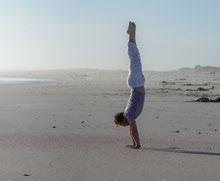

As winter sets in with its cold, crisp air and the serenity of a world at rest, we at Wellness Warehouse focus on the value of warmth, sustenance, and inner calm. Winter is a time to hibernate, recharge, and prepare for the next regeneration. Our theme for this quarter, 'Embrace the Cosy Moments', reflects this attitude, urging us all to focus on deep, holistic wellbeing to get us through the winter months.

This winter, we ask you to adopt health routines that benefit both your body and soul. Our focus on ‘gut feelings' emphasises the importance of a healthy gut for overall well-being. A well-balanced microbiome is critical for physical and mental health, regulating everything from digestion to immunity and mental clarity.
In alignment with our commitment to women’s wellness, we explore the unique health needs of women during the winter months. From hormonal balance to skincare and mental health, we offer practical advice and solutions to help you stay vibrant and resilient. Our goal is to empower you with knowledge and tools to navigate this season with grace and vitality.
Our exploration of supplements continues to guide you in making informed choices about products that can enhance your health. Winter often brings challenges like colds and flu, and we provide recommendations on the best supplements to fortify your body against these common ailments. Our experts weigh in on essential vitamins, minerals, and herbs that can help you maintain your wellness.
We’re excited to launch our new campaign, 'One Small Change’, which encourages you to take a single step towards a healthy lifestyle. We realise how daunting the amount of information available can be, so we're here to help. One simple adjustment, such as adding a new supplement, trying a new mindfulness practice, or changing your diet, can have a tremendous impact.
I often find myself overwhelmed by the choices and unsure of where to begin. It’s in these moments that I remind myself that all it takes is one small change to move onto the next one, creating positive habits along the way. This approach has been a personal mantra, helping me to make meaningful improvements to my own wellness journey.
In this season of introspection and care, we also reflect on the beautiful transformations happening within our Wellness Warehouse community. We are continuously evolving to better serve you, with new store openings and enhanced customer experiences. Our team is dedicated to supporting you on your wellness journey, providing personalised advice and products that meet your unique needs.
As we relax into the tranquil beauty of winter, let us use this opportunity to nourish ourselves thoroughly, shine from within, and prepare for the lively energy that awaits us.
Thank you for being a valued part of the Wellness Warehouse family. We appreciate your confidence and support, and look forward to continuing our path of health and happiness together.
Yours in wellness,
Publisher: Wellness Warehouse
Editor: Lara Potgieter lara@wellnesswarehouse.com
Designer: Mirna Hutchinson design1@wellnesswarehouse.com
Advertising & Directory Enquiries: Sue Dall 084 707 4477 wellmag@wellnesswarehouse.com
Print & Production Consultant: Owethu Kambi 021 203 8000









Wellness Support Office
The Harrington, 3rd Floor 50 Harrington Street, District Six Cape Town
Please note that we are not licensed to diagnose illness or prescribe medication, and the advice shared here does not replace that of a healthcare provider. While we intend to provide the best possible product-related and lifestyle information and support, the responsibility for your healthcare choices remains your own.
Wellness Magazine takes no responsibility for the content of the advertising material supplied directly by advertisers. We accept advertising in good faith, and do not research advertising claims. Kindly consult a professional should you have any doubts as to the efficacy of any claims made.







We catch up with cover model Lauren Helen on how she lives life well…

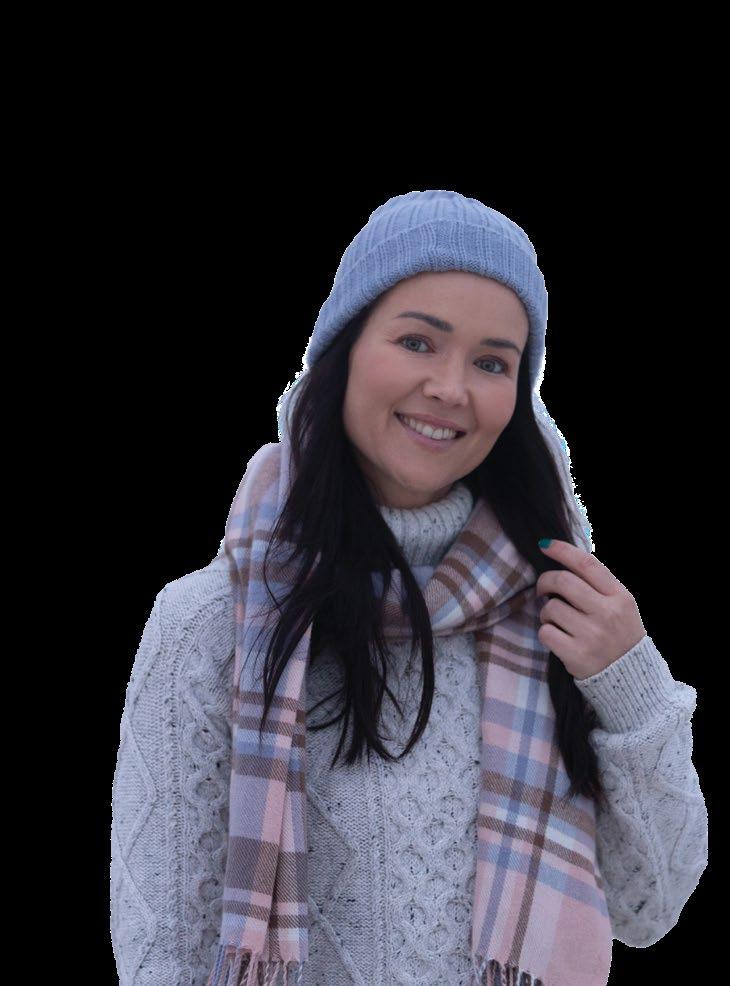
Can you share a bit about your journey to wellness?
My journey to wellness has been long and winding. It started with a disconnect between myself, my body, and food - something many people, especially women, can relate to. This disconnect fuelled my desire to feel better and ultimately led me to study clinical nutritional therapy, which is my current profession.
I specialise in eating disorders and am completing my master's in clinical psychology. My goal is to understand women's mental health and what ‘healthy’ means to each individual since we're all so different.
I chose this path for two reasons: First, to help others by easing their trauma as a psychologist. Second, to explore how the food we eat and our relationship with it can improve our health, instead of making decisions from a place of disorder.
Personally, I struggled with chronic candida in my gut due to years of yoyo dieting and fasting, leading to IBS symptoms and a perpetually bloated tummy. This pushed me to think outside the box and seek healing.
Have you had to overcome any challenges to get to where you are today?
Absolutely. Challenges are a part of everyone's life journey, and it's about accepting them and growing from them. Two significant challenges on my wellness journey were my gut issues and becoming a mom.
My gut challenges led me to create a product called Aceso Fire Cider, which targets gut health. And becoming a mom profoundly changed my life - it made me reconsider everything I knew, pushing me to understand what is best for my child and myself in terms of health, food, and emotional well-being.
How do you live life well on a daily basis?
This is a great question, and one I often ask my clients. Each day is different - some days I focus on work, others on my family, and others on studying. The key is to pause, slow down, and reset. Basic self-care practices like taking vitamins, drinking water, honouring my hunger, and being mindful might seem insignificant but set the tone for my health and wellness. It's about filling my cup in ways that serve me and my family.

Do you engage in any wellness-related lifestyle practices?
Yes, I enjoy getting into nature, slowing down, and staying connected.
I specialise in cognitive behavioural therapy, which includes mindfulness and behaviour modification tools. These practices are very dear to my heart and help me stay grounded.

Do you focus on anything specific to maintain a healthy, balanced diet?
Definitely. I strive for balance in my life, and I'm a huge fan of Aceso Fire Cider, which I designed for gut health. It increases hydrochloric acid, helping us break down food, and reducing IBS symptoms and bloating.
A balanced diet is personal and can't be a one-size-fits-all approach. It
involves maintaining stable energy levels by having three meals and three snacks daily, and not going more than three and a half to four hours without food. Eating intuitively, without restraint or restriction, and including a variety of foods is crucial.
Do you take any supplements?
Yes, I take Aceso Fire Cider, liposomal vitamin B, and vitamin C. Liposomal vitamins are covered in a lipid layer, making them easier to absorb. I also try to eat fermented foods a few times a week and suggest a live probiotic if you don't like fermented foods.
Can you tell us a bit about clinical nutritional therapy?
Currently, I'm more focused on psychotherapy dealing with eating disorders and clinical nutrition. Clinical nutritional therapy involves studying how nutrition can support chronic diseases. For example, for someone with Crohn's disease, understanding how food and dietary habits can support their condition is crucial.
What advice would you give to readers wanting to live life well?
Start small. When aiming to transform your life, setting grand goals can set you up to fail. Begin with small, manageable changes to build momentum.
For instance, instead of reaching for your phone and coffee first thing in the morning, have a glass of water. This simple act can be life-changing as it allows you to pause, change your behaviour, and hydrate.
Living a life worth living involves asking yourself daily, "What can I do today that would make me feel better?" This approach makes wellness more achievable.
For more information or to get in touch, visit www.lhnt.co.za or follow @laurenhelentherapy on Instagram.

The emerging trend of supplement cycling reflects a shift towards personalised and strategic approaches to supplementation. The concept revolves around periodically alternating or ‘cycling’ between different supplements to optimise their effectiveness and mitigate potential tolerance or dependency issues. This practice aims to prevent the body from becoming accustomed to a particular supplement's effects, thus maximising its benefits over time. Additionally, supplement cycling often aligns with the principles of bio-individuality, acknowledging that individual needs and responses to supplements can vary widely. By incorporating cycles of supplementation and periodic breaks, enthusiasts believe they can maintain efficacy, prevent overreliance, and promote overall health and balance.

SCAN THE QR CODE TO SHOP THE TRENDS

Using infrared light to penetrate the skin and stimulate cellular repair and regeneration, red light therapy may offer a range of benefits, from pain relief and improved circulation to detoxification and enhanced relaxation. Infrared saunas, in particular, have gained popularity as a holistic wellness practice, providing a gentle yet effective means of inducing sweating and flushing out toxins while also promoting relaxation and stress reduction. Additionally, infrared light therapy devices are increasingly used for targeted treatments, addressing specific health concerns such as muscle recovery, joint pain, and skin conditions.
Adaptogens and nootropics are increasingly gaining attention as powerful tools for enhancing women's health and well-being. Adaptogens, such as ashwagandha, rhodiola, and holy basil, are natural substances that help the body adapt to stress, supporting hormone balance and mitigating the effects of physical and mental strain. For women, adaptogens can be particularly beneficial in managing the hormonal fluctuations associated with menstruation, menopause, and other life stages. Similarly, nootropics, which encompass substances like bacopa monnieri, ginkgo biloba, and lion's mane mushroom, are renowned for their cognitive-enhancing properties. By promoting neurotransmitter function, blood flow to the brain, and neuroplasticity, these compounds can support mental clarity, focus, and mood regulation, addressing common challenges women may face such as brain fog and mood swings.

Skincare supplements offer a holistic approach to beauty, with targeted formulations of vitamins, minerals, antioxidants, and other nutrients known for their skin-, hair-, and nail-enhancing properties. The range of options is growing every day, with innovative solutions addressing everything from ageing, dryness, acne, and skin dullness to brittle hair and nails. Ingredients like collagen, hyaluronic acid, vitamins C and E, and omega-3 fatty acids work synergistically to promote natural radiance from within.


Most often lauded for their digestive benefits, probiotics are also gaining attention for their potential role in alleviating symptoms of PMS. Research suggests that the balance of gut bacteria may influence hormonal fluctuations and inflammation levels, both of which play a significant role in PMS symptoms such as bloating, mood swings, and cramps. By promoting a healthy gut microbiome, probiotics could potentially mitigate these symptoms, offering women a natural and non-invasive way to manage discomfort at this time. While more studies are needed to fully understand the mechanisms and specific strains involved, integrating probiotics into a balanced diet may provide relief and contribute to overall wellbeing during the menstrual cycle.

New moms are turning to natural health supplements to support both themselves and their babies during this unique stage of life, and brands are getting on board. For mom, prenatal and postnatal supplements enriched with essential vitamins and minerals, such as folic acid, iron, and omega-3 fatty acids, are popular for supporting overall health and aiding in recovery postpartum. Probiotics and herbal teas are also being used by moms to promote digestive health and help reduce stress at this time. For baby, natural supplements including vitamin D drops, probiotics, and DHA supplements, are being incorporated into daily routines to support healthy development and immune function.

A significant emphasis is currently being placed on mitochondrial health, recognising the pivotal role that these tiny powerhouses play in overall well-being. Mitochondria are the cellular engines responsible for producing energy, and their dysfunction has been linked to various health issues, including fatigue, ageing, and chronic diseases. In response, a growing number of natural health enthusiasts are turning to lifestyle practices and supplements aimed at supporting mitochondrial function. These approaches often include regular exercise, stress reduction techniques, adequate sleep, and a nutrient-rich diet featuring antioxidants and mitochondrial-supporting nutrients like coenzyme Q10, alpha-lipoic acid, and resveratrol. As research continues to uncover the intricate relationship between mitochondrial health and overall vitality, prioritising these cellular dynamos has become a cornerstone of the modern wellness movement.

Radiance Gentle Gel Cleanser
A gentle exfoliating gel cleanser with a mild yet effective formula to remove impurities without stripping the skin. With salicylic acid to unclog pores and reduce redness and swelling; aloe vera and chamomile to seethe and nourish; and niacinamide to regulate sebum production, tighten pores, and maintain a healthy skin barrier.
Radiance Hydration Serum
Hyaluronic acid helps to retain the moisture content of your skin, giving it a plumper appearance and reducing the appearance of fine lines and wrinkles. The addition of jojoba oil is naturally nourishing, while rosehip oil brightens for a more even skin tone and helps to calm irritated skin thanks to its antimicrobial properties.
Radiance 2% Bakuchiol
Nourishing Serum
Bakuchiol - a gentle, natural retinol alternative - may reduce the appearance of fine lines and wrinkles, help calm and soothe, and refine texture for a more even skin tone. This nourishing formula also includes hydrating jojoba oil, brightening rosehip oil, antioxidant-rich chia seed oil, and soothing aloe vera.
Radiance Moisture Boost with 3% Niacinamide Serum
Hyaluronic acid helps to retain the moisture content of your skin, giving it a plumper appearance and reducing the appearance of fine lines and wrinkles. The addition of niacinamide moisturises and maintains a healthy skin barrier, as well as minimises enlarged pores, brightens, and soothes the skin. The antioxidant-rich vitamin C may help to brighten the skin for a more even tone and protect from free radicals. This powerful formulation also includes
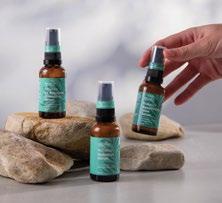
smoothing vitamin B5 and magnesium to soothe red and irritated skin.
Radiance Resurfacing Glow Serum
Papain is a natural AHA - a gentle exfoliator that can help to brighten and improve skin texture. The antioxidantrich turmeric can help to protect the skin from free radicals and reduce the appearance of fine lines and wrinkles, while sea buckthorn deeply moisturises, supports skin regeneration and repair, and helps to improve skin tone and texture.
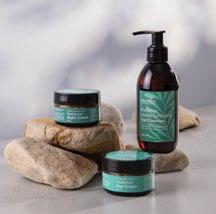
Radiance Day Cream
An ultra-nourishing day cream with jojoba, honey, and vitamin C that’s great for combination to dry skin. Vitamin C helps to protect the skin from free radical damage and reduces the appearance of dark marks for a more even skin tone. Frankincense helps to soothe and calm, clary sage regulates sebum production, and pomegranate and neem oil offer deep hydration.
Radiance Night Cream
A deeply nourishing night cream with shea butter, jojoba, and avocado oil to help plump the skin and reduce the appearance of fine lines and wrinkles. Jojoba oil offers powerful hydration, while niacinamide helps to minimise enlarged pores, brighten, and soothe the skin. The addition of vitamin A may help to reduce the appearance of dark spots and blemishes, while flax seed oil moisturises and elderberry helps to strengthen the skin barrier.
Radiance Clay Mask
A purifying mask that's easy to apply, smells of roses, and will leave your skin feeling soft and smooth. Pink clay draws out impurities and absorbs excess sebum, while remaining gentle on sensitive skin.
Radiance Eye Contour Serum
Infused with a blend of bioactive, natural, and organic ingredients, this soothing eye serum helps to hydrate, cool, and replenish tired-looking skin under the eyes.
Radiance Toning Mist
This alcohol-free formulation harnesses the soothing properties of witch hazel and chamomile to help calm skin irritation, inflammation, and sunburn.
Radiance Exfoliator
A gentle, natural exfoliator to slough away dead skin cells for invigorated skin and a glowing complexion
BODY CARE
Radiance Body Wash
With nourishing and moisturising shea butter, sweet orange essential oil to uplift, basil to energise, and vetiver to soothe and calm
Radiance Body Butter
A rich and fragrant body butter handmade with all-natural ingredients, with calming juniper berry and soothing patchouli
Radiance Body Scrub
A moisturising and refreshing body scrub handmade with all-natural ingredients

FOLLOW US FOR UPDATES:
Preparation time: 15 min
Cooking time: 20 min
Serves 4
Salad
140 g asparagus, thoroughly rinsed and woody ends trimmed
1 red onion, quartered (optional)
5 ml fresh garlic, crushed
30 ml olive oil
140 g mange tout or sugar snaps
2 large courgettes, thinly sliced lengthways into ribbons using a vegetable peeler
100 g chorizo or salami, sliced
4 individual goat’s cheese rounds
4 fresh extra-large eggs, at room temperature
15 ml white wine vinegar
Sea salt and freshly ground black pepper
Dressing
40 ml balsamic vinegar
30 ml olive oil
15 ml whole-grain mustard
Drizzle of honey
METHOD
1. Preheat the oven to 180°C and place the asparagus, red onion and garlic in a roasting pan. Drizzle with oil and season. Roast for 4 minutes, add the mange tout or sugar snaps and roast for 2 more minutes. Remove the asparagus and mange tout and leave the onion to cook for a further 10 minutes. Set aside.
2. Heat a griddle pan until hot. Brush the courgette slices with olive oil and griddle for 1 – 2 minutes on each side until charred. Arrange the vegetables on a serving platter together with the chorizo or salami slices and goat’s cheese.
3. To poach the eggs, put enough water in a sauté pan to reach the ¾ mark. Bring to the boil and add the vinegar. Lower the heat and simmer gently. Crack the eggs into a measuring cup one at a time, then gently drop each one into the simmering water and cook for 3–4 minutes until the egg white has set but the yolk is still runny.
4. Remove the eggs with a slotted spoon and pat them with absorbent paper to lose the excess water before placing on the salad and seasoning.
5. For the dressing, mix all the ingredients together in a jug, drizzle over the salad and serve immediately.
On Saturday mornings, I love going to the food market and getting fresh produce from local farmers and vendors. The quality of the produce is always great, and I often go early to miss the buzz and be back in time to prepare brunch for visiting friends. I like hosting a brunch because it’s a two-inone affair (breakfast and lunch at the same time) and doesn’t take longer than 3 hours, giving me time to catch up with friends and still have the rest of the day to spend with my little ones.
Siba’s Tip: The eggs must be fresh, otherwise poaching them will turn them into egg soup.


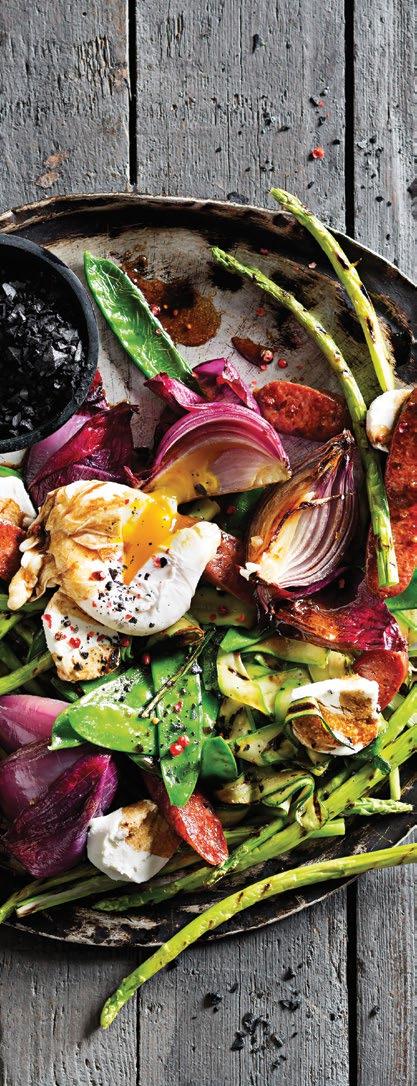
from
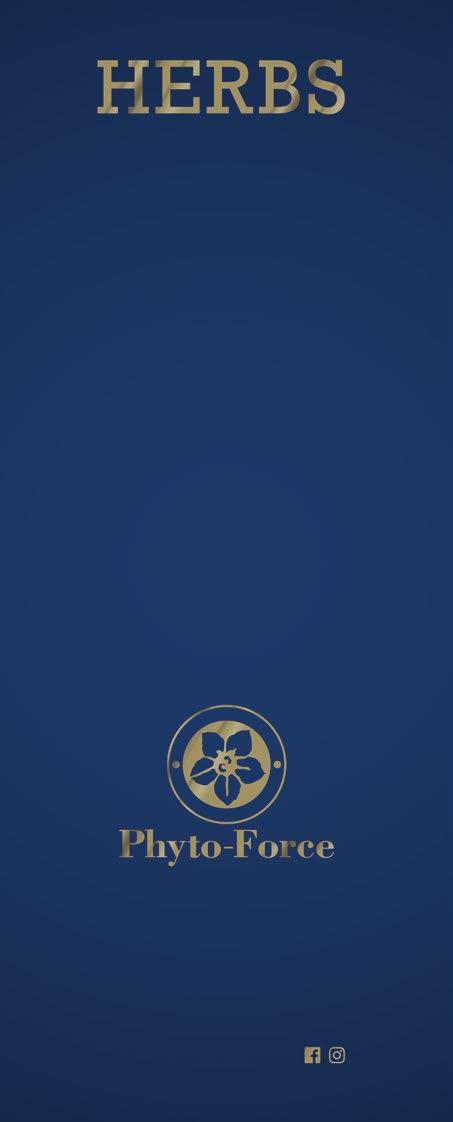 Excerpted
Welcome to My Table by Siba Mtongana. Published by Penguin Random House and available at leading bookstores and online.
Excerpted
Welcome to My Table by Siba Mtongana. Published by Penguin Random House and available at leading bookstores and online.
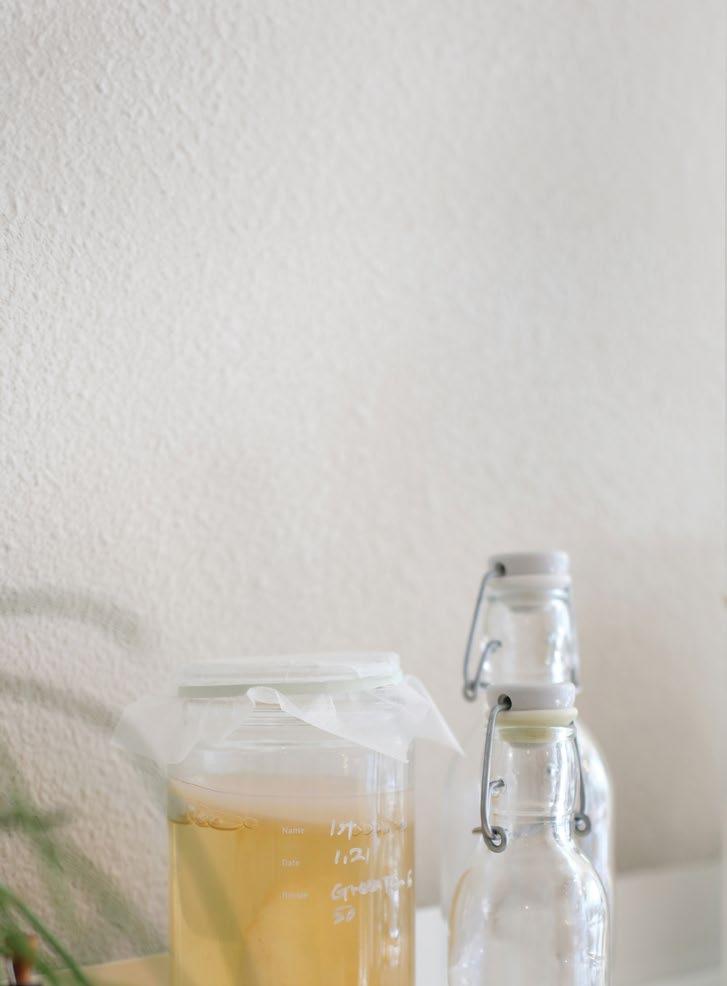
Within our increasing awareness of natural remedies and sustainable living, fermentation emerges as a timehonoured practice that intertwines with everything from our well-being to our skin health and environmental consciousness.
Fermentation isn’t just about creating flavourful foods or extending product shelf life. It’s a transformative process that cultivates beneficial bacteria, fostering not only delicious flavours, but also natural preservatives crucial for sustainable practices.

We have delicious and wholesome baking premixes, porridges, snacks, and more that are Banting-friendly, diabetic-friendly, gluten-free, and grain-free.
Discover how Macro Mixes lets you indulge in treats you’ll love without sacrificing your health.











With its roots dating back thousands of years, fermentation has long been revered for its profound impact on human health.
At the heart of this transformative process lies the cultivation of beneficial bacteria and yeast, which play pivotal roles in fermenting foods and beverages. These microorganisms not only enhance the flavour and texture of fermented goods, but also endow them with potent healthpromoting properties.
Through fermentation, foods such as yoghurt, kefir, kimchi, and sauerkraut become rich sources of probiotics - live microorganisms that confer numerous benefits to the digestive system.
By populating the gut with a diverse array of beneficial bacteria, fermented foods may aid in digestion, boost immune function, and contribute to overall gut health, which is increasingly recognised as a cornerstone of well-being.
Moreover, the fermentation process often enhances the bioavailability of nutrients within foods, making them more easily absorbed and utilised by the body. For instance, the fermentation of grains and legumes can reduce levels of antinutrients such as phytic acid, which can interfere with mineral absorption. This not only enhances the nutritional value of these foods, but also mitigates potential digestive discomfort. Additionally, fermentation can produce beneficial compounds such as short-chain fatty acids, antioxidants, and bioactive peptides, which exert anti-inflammatory, antioxidant, and antimicrobial effects, further bolstering the body's resilience and vitality.
Fermentation's influence on health extends beyond internal wellness to the realm of skincare, where its transformative powers have been harnessed for centuries. Through the fermentation process, natural ingredients such as herbs, fruits, and botanicals undergo enzymatic breakdown, resulting in the creation of potent bioactive compounds that offer a plethora of benefits for the skin.
Fermented skincare products, including serums, essences, and masks, are prized for their ability to deliver concentrated doses of nutrients, antioxidants, and enzymes directly to the skin, promoting cellular regeneration, collagen production, and overall skin health.
One of the key advantages of fermented skincare lies in its ability to enhance the absorption and efficacy of active ingredients.
The fermentation process breaks down complex molecules into smaller, more bioavailable forms, allowing them to penetrate deeply into the skin's layers and exert their rejuvenating effects. Additionally, the presence of probiotics and prebiotics in fermented skincare products helps to balance the skin's microbiome, strengthening its natural defence mechanisms and reducing inflammation.
This harmonious synergy between science and nature underscores fermented skincare as a holistic approach to achieving radiant, healthy skin, harnessing the power of ancient wisdom and modern innovation.

The transformative process of fermentation not only imbues products with nourishing properties, but also embodies sustainability at its core. By harnessing the power of fermentation, we can address our health and wellness needs without compromising our commitment to the planet.
Fermentation is a cornerstone of sustainable food production. Precision fermentation heralds a new era, in which technology meets environmental consciousness, catering to the preferences of health-conscious consumers while reducing ecological footprints. As highlighted by WGSN, a global trend forecasting authority, the naturally occurring bacteria in ferments prolong product shelf life, aligning seamlessly with the ethos of sustainability and conscious consumers.
I invite you to join me in recognising that our choices have a ripple effect on the planet, influencing ecosystems, communities, and future generations. Let us be mindful and seek solutions that harmonise with nature - products and practices that not only enhance our well-being, but also contribute positively to the health of our planet.
Fermentation is a celebration of nature’s wisdom, scientific ingenuity, and global connectivity. Start yours at home today!
Noxy Khowane is a health and sustainability advocate and coach.



In today’s health-conscious world, the search for nutrient-dense, versatile, and sustainable food options is more critical than ever. Among the diverse range of ancient grains making a resurgence, the amaranth grain stands out due to its exceptional nutritional profile and historical significance. Naturally glutenfree and packed with essential nutrients, amaranth offers a multitude of health benefits that make it a must-have in modern diets.
The Nutritional Benefits of the Amaranth Grain and Leaf
Amaranth is a treasure trove of essential nutrients. It is particularly rich in manganese, iron, vitamin A, and vitamin K. These nutrients play crucial roles in maintaining overall health…
Manganese
This mineral is essential for bone health and metabolism. It helps in the formation of connective tissues, bones, and blood-clotting factors.
Vitamin A
Known for its role in maintaining healthy vision, vitamin A also supports immune function and skin health. It is a potent antioxidant that helps combat inflammation.
Vitamin K
Crucial for blood clotting and bone health, vitamin K helps in the maintenance of strong bones and supports cardiovascular health.
Iron
Vital for oxygen transport in the blood and energy production, iron is essential for preventing anaemia and maintaining high energy levels.
The amaranth leaf is also a good source of protein, providing all nine essential amino acids, making it an excellent option for vegetarians and vegans. Its high fibre content aids in digestion and helps maintain a healthy gut.
Incorporating Amaranth into Your Diet
One of the most appealing aspects of the amaranth grain is its versatility. Its nutty flavour and slightly crunchy texture make it a delightful addition to various dishes.

Millet
A staple in many African diets, millet is high in magnesium, which is vital for nerve function, muscle health, and heart health. It is also rich in antioxidants and provides a good source of protein and fibre. Millet can be cooked like rice, added to soups, or made into a nutritious porridge.
Sustainability and Community Support

Here are some simple and delicious ways to incorporate amaranth into your daily diet…
Breakfast Porridge
Start your day with a warm bowl of Umoya Thrive breakfast cereals, which can be found at your local Wellness Warehouse store.
Salad Topper
Sprinkle popped amaranth over salads to add a delightful crunch and boost the nutritional value.
Use amaranth flour in your baking recipes. It can be used to make bread, muffins, and pancakes, providing a gluten-free alternative to traditional flour.
Add a spoonful of your favourite Umoya Nutrient Boost powder to your smoothies. It blends well and enhances the nutritional content while providing a burst of flavour.
Exploring Other Ancient Grains
In addition to amaranth, other ancient grains native to South Africa offer substantial health benefits and culinary versatility. Two notable examples are sorghum and millet.
Sorghum
Another gluten-free grain, sorghum is rich in fibre, protein, and antioxidants. It supports heart health, aids in digestion, and helps regulate blood sugar levels. Sorghum can be used in a variety of dishes, from porridge to flatbreads and salads.

Umoya Foods is a venture of Scaled Impact, a South African not-for-profit that creates local and international products and markets to drive rural development.
Choosing to incorporate ancient grains like amaranth, sorghum, and millet into your diet is not just a healthy choice; it is also a sustainable one. These grains are often grown using traditional farming practices that are environmentally friendly. By supporting the consumption of these grains, we contribute to the preservation of biodiversity and the promotion of sustainable agriculture in South Africa and Africa.
Companies like Umoya Foods are committed to sourcing ingredients from small-scale farmers across South Africa. This not only ensures the highest quality produce, but also supports the livelihoods of local farmers and strengthens community bonds. Sustainable farming practices are encouraged, contributing to a healthier planet and a more robust local economy.
A Step Towards a Healthier Lifestyle
Incorporating the amaranth grain and other ancient grains into your meals is a step towards a healthier, more sustainable lifestyle. Their rich nutrient profiles and versatility make them an excellent addition to any diet. Whether you are looking to enhance your breakfast, add variety to your baking, or boost the nutritional content of your smoothies, ancient grains offer countless possibilities.
By embracing these nutritional powerhouses, we honour traditional agricultural wisdom, support local farmers, and contribute to our overall well-being. Amaranth grain, sorghum, millet, and other ancient grains are not just food choices; they are a celebration of South Africa’s rich agricultural heritage and a commitment to a healthier future.
Each one of our healthy whole foods products contains ingredients that are carefully chosen and sourced from the local producers and small farmers we work with to drive rural community incomes. Umoya products link you directly to the farmers who grow and gather the ingredients.




I
n 2021, it was estimated that over 4 million South African adults were living with diabetes, a chronic metabolic disorder characterised by dysregulation of blood sugar.
In terms of lifestyle diseases, type 2 diabetes mellitus [T2DM] is arguably a leading scourge of our modern consumption habits, underscoring the seemingly inevitable detriments of society’s high intake of calories, refined sugars, and animal products.
Could plant-based diets help prevent and manage the burden of T2DM in our country? A new study from South African medical non-profit Physicians Association for Nutrition (PAN) suggests a plant-based prescription may offer various health benefits.
Lifestyle Medicine – a Missing Link in Modern Healthcare
A T2DM diagnosis is not always a life sentence. Optimising lifestyle factors can prevent, manage, and potentially reverse T2DM. South African health systems recommend three months of lifestyle modification for all persons diagnosed with T2DM, with or without pharmaceutical interventions.
A high-quality diet, regular exercise, improved sleep, and stress management can be powerful lifestyle changes for health and well-being.
Dietary shifts increasing plantbased food consumption are gaining popularity worldwide, with the most common health benefits including protection from chronic diseases. In 2021, UBUNTU Wellness Centre in Cape Town developed the UBUNTU 21-day whole food plant-based eating challenge for T2DM. Participants were provided medical care and guided by a recipe book, Healing Diabetes and Other Lifestyle Disease: Cooking Africa’s PlantBased Whole Foods .
Integrating Plant-based Nutrition into South African Health Systems
Medical non-profit organisation, PAN South Africa, is part of a global community working with health
professionals, health science students and policymakers on the role of plant-forward dietary patterns for chronic disease, climate change and pandemic risk.
To influence medical practice in South Africa, PAN South Africa teamed up with North-West University to publish a case study of the participants’ and healthcare workers’ experience of the plantbased eating challenge in the South African Journal of Clinical Nutrition.
The study followed the first 10 participants of the challenge. Through interviews with participants and their
physicians, the research unpacks unique perspectives on how the challenge impacted their health and fit into their daily lives.
Dr. Nanine Wyma, Managing Director of PAN South Africa, says, “Most plant-based nutrition research is based on populations in the Global North, or high-income countries. It is vital to adapt plant-based dietary concepts to South African populations who are suffering from high burdens of diabetes, heart disease, obesity, and cancers.”
Among the participants with T2DM, the plant-based dietary approach improved their blood sugar control, and some reduced or discontinued their medications. Participants also lost weight, reduced their abdominal circumference, and gained psychological benefits.
“Seeing what [plant-based eating] can do in terms of chronic disease management, this was very powerful,” said a physician who monitored participants of the challenge.
The Reality of Plant-based Eating in South Africa
Health may be a powerful motivator for dietary change, but food choices are influenced by a number of contextual factors – personal, interpersonal, organisational, cultural and healthcare systems.
African food environments still largely promote animal-based diets, making it difficult to access a diversity of fruits, vegetables, and healthy plant-based meals. PAN South Africa explored and outlined these factors in the published study and hopes that the findings improve health promotion and the understanding of plant-based diets among South African healthcare professionals.
Learn More About Plant-based Nutrition
Talk to your doctor or dietician about a plant-based diet if you’d like to better address your lifestyle habits in treating a T2DM diagnosis. PAN South Africa has a plant-based friendly healthcare provider database to help find a suitable professional.
PAN South Africa also presents a range of learning opportunities for health professionals. With the Plant-Based Nutrition Journal Series, licensed health professionals can receive three CPD points for free each month. Health science students are also invited to get to know PAN University, where students host educational events, film screenings and fun activities involving plant-based food on university campuses nationwide.
For more information, follow PAN South Africa at @pan_southafrica on Instagram, or visit www.pan-sa.org.





Are you aware of everything you consume in a week? Do you know your average nutrient intake? What vitamins and minerals may be lacking in your diet? If the only thing you have been tracking is to eat three meals a day, now is the perfect time to introduce you to the concept of eating 30 plants a week.
Simply put, this is a fun and delicious way to supercharge your nutrition by enjoying a vibrant variety of plantbased foods. This includes not just fruits and veggies, but also whole grains, nuts, seeds, legumes, herbs, and spices.
Embracing this colourful cornucopia of foods ensures that you get a wide range of nutrients, boosts your gut health, and nurtures a thriving microbiome.
Looking back on my journey towards eating the rainbow, I can honestly say that it’s been a game-changer for my health and well-being. At first, it was a bit of a wake-up call (and quite a shock) to realise that my diet wasn’t as varied as I thought. Shaking up my routine and breaking free from my habit of eating the same veggies over and over was a challenge. But after a few tries, I'm proud to say that I’m now a plant-eating pro, often surpassing the 30-plant mark. Here are some tips that helped me along the way…
Create a weekly meal plan that includes a vibrant array of plant foods to boost your nutrition.
When you go grocery shopping, take a literal approach by selecting plants in every colour of the rainbow, ensuring a diverse variety to enjoy throughout the week. Incorporate different types of fruits and vegetables into each meal, aiming to introduce one to two new plants per meal. By doing this for three meals a day over seven days, you'll easily meet and surpass the goal of 30 different plant foods each week!
Keep a food diary to track the different plant foods you eat each week, and aim to add new and diverse options to your diet regularly.
Try different cooking methods such as roasting, grilling, steaming, and raw preparations to keep meals interesting, and explore new recipes online or in cookbooks that emphasise plantbased ingredients.
Whether you’re into smoothies, warm soups, or homemade pasta sauces, a blender can be a game-changer, allowing you to pack a wide variety of vegetables or fruits into just one meal.
You can also easily combine different plant foods in dishes like salads, stirfries, and grain bowls, and use a variety of herbs and spices to add flavour and increase the number of plants.
Opting for plant-based snacks like fruit, nuts, seeds, and veggie sticks is an excellent way to increase your plant intake, especially on busy days.
If you share a space with a flatmate or significant other, or frequently dine out with friends, you have the perfect chance to explore a variety of new plant-based options. Swapping cooking nights with your housemate can ease the load while still ensuring nutritious meals. Dining out becomes an adventure to try unique menu items, and hosting dinner nights provides an opportunity for everyone to contribute their own plant-based dish to the meal.
DAY 1
• Breakfast: Oatmeal with blueberries, chia seeds, and milk of your choice
• Lunch: Quinoa salad with mixed greens, cherry tomatoes, cucumbers, and chickpeas
• Snack: Apple slices with almond butter
• Dinner: Stir-fry with chicken, bell peppers, cabbage, carrots, peas and brown rice


DAY 3
DAY 2
• Breakfast: Smoothie/juice with carrot, ginger, turmeric, and flax seeds
• Lunch: Spinach and broccoli soup with basil, green beans, onions, and garlic
• Breakfast: Homemade granola bars with dates, dried fruits, and nuts
• Lunch: Whole wheat wrap with chicken, hummus, rocket, roasted red peppers, and avocado
• Snack: Baby carrots and hummus
• Dinner: Black bean tacos with corn tortillas, lettuce, tomatoes, and salsa
Consider this your cue to upgrade your eating habits for enhanced health and vitality!



The next few months see the spotlight being shone directly on women’s health in global consciousness. July is Fibroid Awareness Month, August is Women’s Month, and September is Menopause and PCOS Awareness Month.
This is fitting, as women around the world face a multitude of devastating health challenges, ranging from common issues like PMS and menopause to more complex conditions like fibroids, endometriosis, and PMDD (premenstrual dysphoric disorder).
Every day, women experience everything from heavy bleeding, pelvic pain, and fatigue to mood disturbances and more.
The time is ripe for us to speak up about what we are going through, and to support our sisters experiencing the same.
The first step towards healing the universal feminine wound is awareness. Women need to know that - while medical professionals and interventions are required in more serious casesthere are a multitude of ways in which we can support our own hormonal health every day.
One of the steps I have found to be the most helpful on my own journey back to balance has been the addition of supportive ingredients to my daily health regime.
Here are a few of my favourites…
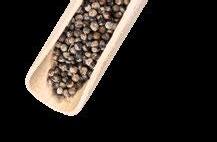


Often referred to as ‘female ginseng’, this traditional Chinese herbal remedy is renowned for its benefits in women's health. It has been used for centuries to address various gynecological issues, including menstrual irregularities, menopausal symptoms, and PMS.
Dong quai is believed to help balance estrogen levels, alleviate cramps, and improve blood flow, making it a popular choice for managing menstrual pain and enhancing overall reproductive health.
It also contains phytoestrogens, which can mimic the body's natural estrogen and potentially ease menopausal symptoms like hot flashes.
A fruit of the chaste tree, chasteberry has been valued for centuries in herbal medicine for its beneficial effects on women's health, particularly in regulating hormonal balance.
It is widely used to alleviate symptoms of PMS, such as breast tenderness, irritability, and mood swings, by influencing the pituitary gland to reduce prolactin levels, thereby balancing other hormones like progesterone and estrogen.
Chasteberry is also known to support menstrual regularity and has been used to manage conditions like amenorrhea (absence of menstruation) and menorrhagia (heavy menstrual bleeding).
A prominent herb in Ayurvedic medicine, ashwagandha offers numerous benefits for women's health, particularly in managing stress and hormonal balance.
Known for its adaptogenic properties, ashwagandha helps the body to cope with stress by regulating cortisol levels, which can positively affect mood, energy levels, and overall well-being.
A perennial plant native to North America, black cohosh has long been used as a natural remedy for women's health issues, particularly those related to menopause.
This herbal supplement is commonly employed to alleviate menopausal symptoms such as hot flashes, night sweats, mood swings, and vaginal dryness.
The active compounds in black cohosh, including triterpene glycosides, are thought to have estrogen-like effects that help balance hormone levels, thereby reducing the severity of these symptoms.
Additionally, black cohosh may also support menstrual health by alleviating PMS symptoms and menstrual cramps.
It can also be helpful during the transition into menopause, easing symptoms such as hot flashes and hormonal fluctuations.
This herb is also used to support thyroid function and may aid in alleviating symptoms of hypothyroidism, which disproportionately affects women. Ashwagandha may also help to enhance reproductive health by improving conditions like polycystic ovary syndrome (PCOS) through its potential to balance hormones and reduce inflammation. It may also promote better sleep, boost libido, and enhance cognitive function, contributing to a holistic approach to women's health.

Rich in essential nutrients, it is often used to alleviate symptoms associated with menopause, such as hot flashes, mood swings, and sleep disturbances, by supporting the endocrine system and promoting hormonal equilibrium. It
Magnesium is an essential mineral that plays a crucial role in women's health, offering a wide range of benefits from menstrual health to mental well-being.
It is particularly effective in alleviating symptoms of PMS such as mood swings, irritability, and bloating by regulating neurotransmitters and reducing inflammation.
Magnesium also supports muscle relaxation and can help reduce menstrual cramps and migraines, which are common complaints among women.
During menopause, magnesium aids in managing symptoms like insomnia, mood fluctuations, and bone density loss, thereby improving overall quality of life.
Additionally, adequate magnesium levels are important for heart health, blood pressure regulation, and maintaining stable blood sugar levels, which are vital for long-term health.
Zinc is a vital trace mineral that significantly contributes to women's health by supporting various bodily functions and overall well-being.
For reproductive health, zinc is essential for hormone regulation, which can aid in managing menstrual cycles, reducing the severity of PMS symptoms, and supporting fertility.
During pregnancy, adequate zinc levels



Vitamin E is a powerful antioxidant that plays a vital role in women's health by protecting cells from oxidative stress and supporting various bodily functions.
This fat-soluble vitamin is crucial for maintaining healthy skin and hair, promoting cell regeneration, and reducing signs of ageing.
For reproductive health, vitamin E helps regulate menstrual cycles and alleviate symptoms of PMS such as breast tenderness and cramps by balancing hormones.
It is also beneficial during pregnancy, as it supports fetal development and reduces the risk of complications.
Vitamin E may also help to ease menopausal symptoms, such as hot flashes and mood swings, by stabilising hormone levels.
The B vitamin group, which includes B1 (thiamine), B2 (riboflavin), B3 (niacin), B5 (pantothenic acid), B6 (pyridoxine), B7 (biotin), B9 (folate), and B12 (cobalamin), plays a critical role in energy production, converting dietary nutrients into usable energy.
These vitamins are particularly important for maintaining healthy skin, hair, and nails, and for supporting brain function and mental health by aiding in the synthesis of neurotransmitters and reducing the risk of depression and anxiety.
For reproductive health, B6 can help alleviate PMS symptoms and regulate hormonal balance, while folate (B9) is crucial during pregnancy for fetal development and preventing neural tube defects. B12 is essential for nerve health and the formation of red blood cells, preventing anemia and associated fatigue.
Kerri-lee Taylor is the Founder and CEO of Kiko Vitals, leading providers of a 100% natural feminine supplement range that’s backed by science and offers real results. As a certified
Hormone Health Coach from the Institute for Integrative Nutrition, she brings a deep understanding of the intricate relationship between lifestyle, nutrition, and hormonal balance to her products and brand. One of her hero innovations - Kiko’s Hormone Balance formula - contains all her go-to ingredients for radiant feminine wellness. Kerri-lee is also passionate about driving change at the intersection between women’s wellness and technological innovation. For more information, follow @kikovitals on Instagram or visit www.kikovitals.com.


For girls who are, like me, from Hanover Park – a small township in Cape Town infested with gang violence and poverty – the world can seem incredibly small. It is like being within a society, within a bubble, that very little of the outside world seems to penetrate and reach. We are all born in the community day hospital, raised in the community and go to school because it is a legal requirement. Before it was a legal requirement, many did not finish even primary school, especially girl children.
Generally speaking, even then, the chances of escaping and experiencing life outside of the bubble seemed impossible, and almost laughable to even consider. You are bound to duty, poverty and Black tax. Tertiary education is seen as an aspiration for white people, not us – never us. When I was younger, it was not even a conversation – so much so that I did not even know that it was a possibility. After we finish school and try to find a job, the next step, as with the rest of the sacraments for girl children from the Flats, would be to get married, and have children – ideally in the order specified. If you switch the order up, you will raise eyebrows and be judged severely by everyone – from the priest to the neighbourhood drunkard and even the community moms.
Your worth as a girl child is seen in key things – respectability, European beauty standards, your ability to perform wifely duties and, lastly, the functionality of your womb. Even as a child, your mind is filled with ideas of motherhood, and how it is a blessing to have children. Your job is to be fruitful and multiply while relying on God to make a way.
This concept always made me laugh internally although I never verbalised it – having children and relying on God to provide for them. It sounded strange to me, considering how so many people and their children were living in poverty – I didn’t understand it, and thought maybe there was a special number of children you had to have before the whole making a way thing starts to kick in. There is no margin for error, no wiggle room, no negotiation... And woe to those who are not fruitful and who do not multiply, because surely ... surely ... they are cursed by the Almighty with lifelong spinsterdom?
Sexual and reproductive health is taboo. We don’t talk about it at all, so it does not exist, right? You are better off assuming babies come from the mountain because asking questions about them is shameful. We don’t talk about our genitals or sex organs, we use euphemisms, even as adults, and there are no conversations about why some people’s ovens don’t work as they should, apart from the occasional community skinner about how so and-so’s husband ran off, apparently justifiably, because so-and-so’s oven was not working. Women’s worth is in their ovens and their ability to make dough rise without mishaps. And yes, by oven ... I do mean uterus.
To add insult to injury, there is no situation wherein it is justifiable for women to walk out on their marriages, even if the reason is something their husbands could control – unlike infertility. As a woman, you are then instructed to carry your cross. I guess it is as the saying goes on the Cape Flats: ‘Meat is meat and a man must eat.’
In the middle of winter in July 2014, when I was 19 years old, I was rushed to the hospital on my GP’s orders – he was not entirely sure what was wrong with me but knew it was dire enough to give me a letter to be seen at the emergency room at the local hospital. I was feeling feverish, nauseous, exhausted and had extreme pain – especially on the right side of my body. The nurses and hospital staff took pity on me because I looked like I was near death because of the pain. I was immediately admitted and spent the night and early morning undergoing a series of tests and scans to get to the bottom of what was causing my strange symptoms. I was then informed I was not allowed to eat – not that food was even on the agenda in that noisy, smelly and overcrowded ward. Soon thereafter, I was told that I needed to have an emergency surgery as they had located a mass on my right ovary from a scan. I was terrified and had no idea what to expect or what it could be – I had never had any kind of surgery before.
I woke up, groggy from the anaesthesia, and was back in the enormous post-surgery ward. It seemed that everything in there was in various shades of white – white linen, white uniforms, white walls. The light was unnervingly bright to me and, suddenly, my doctor appeared out of nowhere, leaning over the railings of my hospital bed. She made no attempt to prepare me, sugar-coat or even check that I was fully conscious before she started to speak. She stopped speaking, or I stopped listening, I may have slightly blacked out again and then I heard her say ‘you have endometriosis, really, really bad. It is unlikely that you will ever have children.’ I don’t remember responding, or acknowledging what she had said, and felt myself slipping back into an anaesthesia-induced stupor as her face faded away in my mind’s eye.
Even through the numbing effects of the anaesthesia, I felt a heaviness – the feeling of despair and hopelessness had already started to creep in. My entire world shattered around me, as I lay in my hospital bed attempting to physically recover while being torn apart emotionally and psychologically. It felt brutal, disheartening and inhumane. The doctor’s bedside manner, in retrospect, is one of the coldest, most violent experiences of my life. She let me know my life, as I knew it or imagined it, would never be the same again with about as much empathy and emotional range as someone ordering a coffee. I don’t suppose the need for counselling or proper emotional support is important for girls like me…
Want to read more? Nadine Dirks’ Hot Water , published by Jacana Media, is available at all good bookstore and online.

With winter upon us, it’s more important than ever to guard your immune system, especially with a higher prevalence of respiratory infections during the colder months. Sfera has a powerful immune duo to support your respiratory system all winter long.
For Preventative Support use Sfera Full Spectrum Mushroom Complex. This Sfera bestseller contains a concentrated extract of five different medicinal mushrooms offering a wide range of benefits, including optimal immune function support.
General health and immune support
May reduce fatigue
Contributes to normalimmune function May increase energy
For support during respiratory infection, use Sfera Full Spectrum Mushroom Complex PLUS Tulsi to assist with various respiratory ailments, as well as to enhance immunity.
Respiratory support
Support for rhinitis and respiratory allergies May assist with clearing mucus May help alleviate fever, coughs and colds
I’ve been exploring the wellness space for well over a decade, gaining knowledge across diverse modalities and tapping into the latest trends and advancements that the ‘new-andimproved’ world promises to offer. However, it wasn’t until I discovered the ancient wisdom of Ayurveda that I began to understand what real health felt like.
Ayurveda is a 5 000-year-old modality. Although incredible breakthroughs

have since been made in the field of medical science and surgery, many will agree that we’ve failed in trying to solve lifestyle diseases, and are in an era of rapid health deterioration and chronic illness.
So many are focused on lifespan, and modern drugs can perhaps give us that. However, I’d rather have health span. We all deserve to feel vital, to grow old gracefully and with dignity and, under most normal circumstances, we deserve to part ways with life because of old age (that was a thing back in the day!), not because of chronic lifestyle conditions, which - in many casescould be avoided.
Ayurveda, simply translated, means the ‘science (veda) of life (Ayu)’. It is the rich and rewarding process of getting to know ourselves so intimately that we make diet and lifestyle decisions that are best for us. There is no one-size-fits-all solution.
And that’s the trouble with all the health fads and latest ‘cure-all’ supplements: no human is exactly the same as another, and we therefore need to understand our unique natureknown as our ‘prakruti’ in Ayurveda - in order to thrive.
In Ayurveda, a ‘swastha’ is a ‘healthy person’, and one can only be considered healthy if one has:
• balanced energies of the body (doshas)
• a proper digestive mechanism (agni)
• healthy body tissues (dhatus)
• proper elimination of waste (malas)
• a healthy and content soul (atma)
• healthy sense organs (indriya)
• a healthy mind (manas)
This is perfect health!

As we can see, Ayurveda extends well beyond physical health. Dedicated students are promised physiological and spiritual wellbeing – arguably what we’re all after.
The topic of Ayurveda is extensive. The first step in approaching and getting to understand this in-depth science, at least at the surface level, is to understand your prakruti, and for that we refer to the three dosha functional concept.
The three doshas are made up of the five elements called ‘panchamahubutas’, which make up this entire universe and everything we come into contact with. They are: space, air, fire, water, and earth. Each of the doshas, however, has dominant elements which give them their primary qualities:
• Vata (space, air)
• Pitta (fire)
• Kapha (water, earth)
One can have a ‘sama prakruti’, where all three doshas are found in one person in equal proportions, although this is highly unlikely. Most people have two doshas that dominate, for example: vata-pitta, or they can have one dosha that dominates, for example vata, pitta, or kapha.
There are many online tests that can help you determine your prakruti. I recommend the Maharishi Ayurveda dosha test at mapi.com/a/dosha-quiz/ questions. It’s important to know that you can be a pitta dominant prakruti, but you could be suffering from vata diseases because of dietary and lifestyle choices to date. Although these need to be addressed using recommendations for that imbalanced dosha (vata, in this case), when you answer the questionnaire, try to connect to the blueprint you were born with, as that will be your prakruti.
Although all of us have all three doshas, if - for example - you discover that your prakruti is predominantly pitta, you might finally understand why hot weather makes you feel short-tempered and annoyed, or why spicy foods agitate you. You might finally understand why alcohol just doesn’t agree with your system, or why running marathons makes your body inflamed. You might get why you appreciate efficiency at work, and why you gravitate towards people who are concise, well considered and get on with the job. You’ll also understand not just your physical appetite, but also your appetite for ambition. And you’ll get why you feel so passionate about things that are close to your heart. Even though the health benefits of fermented foods have been shoved down your throat, you’ll finally get why they just don’t work for your unique body. And so the list goes on!
Importantly, you’ll finally understand you.

Once you understand yourself, you will be able to make dietary and lifestyle choices that support your prakruti and thereby optimise your wellbeing. Using the above examples, a simple lifestyle swop might be opting for surfing or swimming instead of going on long runs, or you might choose a diet rich in diverse fruit and veg and walks in cool, damp forests as a way to nurture your microbiome, rather than eating heating ferments that aggravate your system. You will no longer be making decisions based on what someone says ‘works for everyone’ – you’ll be making educated decisions about what works for you.
This is really taking ownership of your health, instead of outsourcing it. This is empowered wellbeing – and it is where your journey to ‘health span’ begins!
Kate Aitken is an internationally accredited health coach and Reiki II practitioner. She is particularly passionate about ancient healing modalities, and is currently studying Ayurveda and Panchakarma through The School of Ayurveda and Panchakarma in Kerala, India. Follow her @_well_rooted_ on Instagram, or get in touch at kate@wellrooted.co.za.


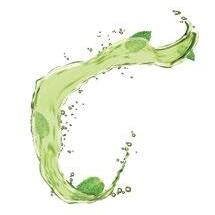
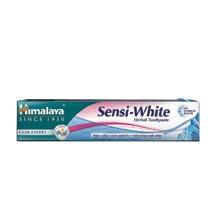


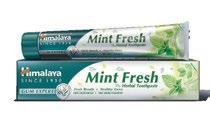
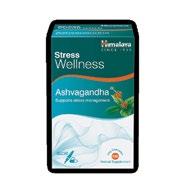


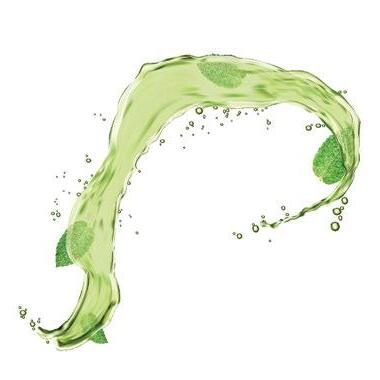

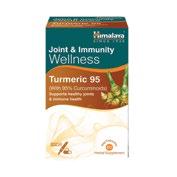







I magine someone telling you they picked up a book, briefly read the preface and the last paragraph, and then claimed to understand and know everything about it. Would you listen to them? This analogy can be applied to how the media and some experts interpreted the findings of the STRENGTH Clinical Trial regarding omega-3 fatty acids and cardiovascular health.
The trial was launched to explore the potential benefits of omega-3 fatty acids on cardiovascular health. After nearly three years of enrolling participants, the trial began in June 2017 and was stopped early in January 2020 due to futility, meaning that it did not yield positive results. These findings, published in the Journal of the American Medical Association, sparked widespread media coverage. For example, a Healthline article dated November 19, 2020, titled "Study Finds Fish Oil May Not Help Your Heart," presented the trial's conclusions out of context and without supporting evidence, leading to the erroneous belief that fish oils are ineffective for heart health.
While this article cannot delve deeply into the STRENGTH Clinical Trial or the science of omega-3 fatty acids, it can highlight some critical aspects that were overlooked. The Healthline article stated, "The study found that a high dose of omega-3 fatty acids did not reduce people’s chances of experiencing a major cardiovascular event." However, the participants in the trial were not average individuals. They were statin-treated patients with high cardiovascular risk, hypertriglyceridemia, and low levels of high-density lipoprotein cholesterol (HDL-C). These criteria are crucial for understanding the therapeutic potential of omega-3 fatty acids and other natural substances that provide protection against chronic diseases.
To analyse the efficacy of any biological fuel, including omega-3 CA (carboxylic acid), we must consider five key parameters:
1. Chemical format and bioavailability, considering individual absorption, metabolism, and elimination rates
2. Presence or absence of necessary co-factors for optimal biochemistry
3. Availability of cellular energy for actions involving the substance (e.g., mitochondrial function)
4. Biological quality and functioning of the tissue on which the substance operates
5. Functioning of supportive organs or systems for acquiring, processing, transporting, delivering, and utilising the substance
The STRENGTH Clinical Trial was a double-blind, randomised, mmulticentre trial with 13 078 patients, comparing a daily supplementation of 4 g of omega-3 CA (Epanova by AstraZeneca) with corn oil in statin-treated participants with high cardiovascular risk, hypertriglyceridemia, and low HDL-C. The primary endpoint was a composite of major adverse cardiovascular events: cardiovascular death, nonfatal myocardial infarction, nonfatal stroke, coronary artery revascularisation, and hospitalisation for unstable angina. The trial was stopped early due to a low chance of clinical benefit and a statistically significant increase in atrial fibrillation in the omega-3 CA arm compared with the corn oil arm (2.2% vs. 1.3%).
Now, consider the five parameters above. These patients’ cardiovascular systems were severely compromised before the trial began. Using the analogy of a 5-litre bucket of water to extinguish a house fire, the omega-3 CA might have been too little, too late. Expecting it to put out the 'fire' in these high-risk patients is unrealistic. The myocardium requires a

steady supply of ATP, primarily derived from the mitochondrial catabolism of carbohydrates and fatty acids. PPARs (Peroxisome Proliferator-Activated Receptors) regulate metabolic pathways, with omega-3 fatty acids serving as relevant endogenous ligands. High-risk cardiovascular patients have various degrees of cardiomyopathy, where the PPAR/ PGC-1α system is deactivated, leading to a decreased ability to utilise longchain fatty acids like omega-3 despite increased supplementation. The increased EPA levels observed in the trial participants were not effectively utilised due to this dysfunction.
Dismissing the benefits of fish oils based on this trial is like claiming water cannot quench fire because a small bucket couldn't save a burning house. Omega-3 fatty acids have demonstrated beneficial effects on various cardiovascular risk factors. Concentrate on prevention, and health will take care of itself.


































ENHANCED FOR




Our Natroceutics Omegas are in the superior Triglyceride Form as nature intended. Sustainably and responsibly produced from wild Alaskan pollock in an MSC-certified facility. Highly potent delivering 400mg of EPA and 300mg of DHA per 1000mg capsule. Each batch is purity tested, for TOTOX score, heavy metals and contaminants. Our Natroceutics Omega 3 Fortified is further enhanced using Lutemax® a leading extract of Lutein + Zeaxanthin, powerful carotenoids naturally derived and essential for eye and brain health. Each serving also contains nature identical Vit K2 (MK-7) to further enhance the cardiovascular and bone health of those that consume our Omega.
Natroceutics Omega 3 Fortified for those who do not wish to compromise on quality and expect the best from their Omega.
natroceutics.com
info@natroceutics.com
Harness your natural glow with the Radiance natural beauty collection from Wellness
To stand a chance to win the full Wellness Radiance face and body care range, let us know why your skin needs a bit of love right now.
Find an aromatherapy solution for every mood and space with Flora Force ’s new Essential Oil Collection
To stand a chance to win a set of oils, let us know which fragrance is your favourite.




Get your daily vitamins and minerals in the most delicious way possible with NutriPure ’s Gummies !
To stand a chance to win one of each of the gummies in the collection, let us know which you would try first.
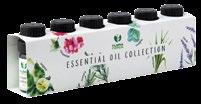
Detox and debloat, ease anxiety and stress, and restore your energy and hair health with JSHealth
To stand a chance to win a bottle of JSHealth Detox + Debloat , Mild Anxiety + Stress , and Hair + Energy , let us know which you need most at this time.



Enjoy year-round immune support with Good Health ’s Viralex Lipo Pro C
To stand a chance to win a box, let us know how you are supporting your immunity this winter.

Enjoy all the taste without the gluten, thanks to Schar’ s range of sweet and savoury delicacies.
To stand a chance to win a hamper full of cookies, crackers, and more, let us know why you choose gluten-free.


*Please note that entering these giveaways adds your email address to the Wellness Warehouse marketing database. If you would prefer to opt out of future correspondence from us, please indicate thus in your entry email. T’s & C’s Apply










Have you ever wondered why some supplements are more effective than others? The key lies in bioavailability, a scientific concept that describes how quickly and effectively your body can absorb and use the active ingredients from a supplement. This is crucial because it directly impacts the supplement's effectiveness and safety.
By ensuring high bioavailability, we maximise the benefits of the supplement while minimising potential risks.
Exploring Effective Technologies for Enhancing Oral Supplement Bioavailability
In recent years, a variety of advanced technologies have emerged to improve bioavailability. Among these, certain methods stand out as particularly effective and promising.
Micronization
Micronization is the process of reducing the particle size of substances to enhance how quickly they dissolve. This method works best for substances that are very stable and unaffected by the gastric environment, yet benefit from increased bioavailability when reduced to a smaller size, such as NAD, PEA, and creatine monohydrate. However, this method does not shield substances from strong stomach acids, making it unsuitable for acidsensitive substances or those with lower stability.
Conventional Nanoencapsulation
This method goes beyond micronization by further reducing particle size to the nanoscale. These tiny particles are then encapsulated (coated) with a single layer of polymers to help shield them from degradation and enhance
absorption. Nanoencapsulation allows for precise control over particle size, making it suitable for applications requiring smaller particle sizes and that benefit from controlled or targeted release mechanisms. These include colon-targeted probiotics, omega fatty acids, and resveratrol. Nanoencapsulation is less suited for substances that are less stable or need increased protection from gastric acid. This is often the case with substances that have complex molecular structures or those that require very specific environmental conditions to remain stable and effective.
Liposomal Technology
This sophisticated technique involves encapsulating nano- or microspheres within a phospholipid bilayer, significantly enhancing their stability and the effectiveness of their delivery. This technology is especially advantageous for vitamins and other substances that typically have low bioavailability, requiring both enhanced stability and better cellular absorption to be effective. The liposomal structure facilitates direct absorption into the bloodstream. Examples include vitamins (C & E), antioxidants (glutathione, coenzyme Q10), and phytochemicals (curcumin, ashwagandha). Due to the complexity and high cost of producing genuine liposomal supplements, it's essential to opt for reputable brands like Biomax®, PureWay C® or Zeal®.
Sucrosomial Technology
This novel technology adds yet another protective layer of sucrose esters around the phospholipid bilayer of the liposome. This further enhances nutrient protection and absorption. The sucrester matrix increases the permeability of the intestinal barrier and allows nutrients to directly reach the bloodstream. This makes it particularly suitable for nutrients that are sensitive to the gut environment and require direct and
sustained absorption into the bloodstream for effectiveness.
Compounds like selenium, iron, magnesium, zinc, and calcium benefit notably from sucrosomial technology, which provides almost complete protection against stomach acids and enzymes, increases nutrient bioavailability, and minimises gastrointestinal discomfort often associated with minerals like iron and magnesium. However, due to its patent protection, sucrosomial technology tends to be more expensive and complex to manufacture, and is available from only one global manufacturer.
When selecting a supplement, it's important to consider the properties of its ingredients, such as its stability, solubility, and acid sensitivity. Techniques like micronization and nanoencapsulation are designed to enhance dissolution rates, while liposomal and sucrosomial technologies provide advanced delivery and increased stability, protecting the nutrients from stomach acids.
By choosing supplements that employ the most effective technology for their specific characteristics, you ensure that the active ingredients are used efficiently by your body, supporting your health and well-being.
Carmi Wilmans holds a BSC Honours degree in Pharmacology, and is the Chief Operating Officer for Neogenesis Health.
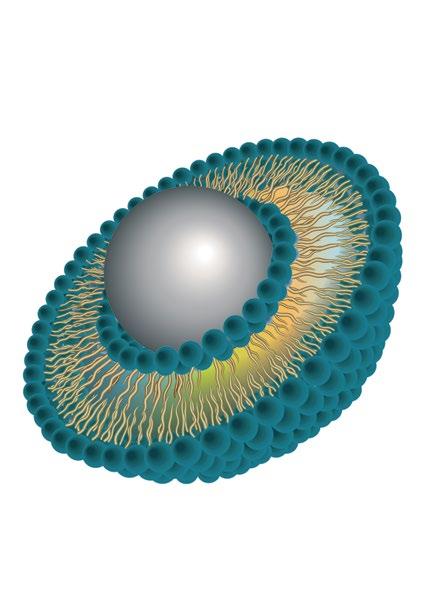




I
n our modern, hyper-connected world, quality sleep often feels like a luxury rather than a necessity. With the pressures of work, social commitments, and the ever-present glow of screens, achieving a restful night's sleep can seem like an elusive dream. For many, turning to sleep aids may seem like the only option, but concerns about addiction, side-effects and dependency make this a less-thanideal solution.
The good news is that there is hope!
For those seeking safe and sustainable sleep aids, natural supplements can offer a gentle approach to supporting healthy sleep patterns. Unlike prescription medications, which can carry the risk of dependence and withdrawal, these supplements work with the body's natural processes to promote relaxation and restful sleep without the fear of addiction.
OUR TOP NATURAL SUPPLEMENTS FOR BETTER SLEEP
Magnesium
Known as nature's relaxation mineral, magnesium plays a crucial role in calming the nervous system. Deficiencies in magnesium have been linked to insomnia and poor sleep quality.
GABA
A neurotransmitter with inhibitory effects in the brain, GABA is often used as a sleep support supplement to promote relaxation and aid in achieving restful sleep.
Valerian Root
This herbal remedy has been used for centuries to promote relaxation and relieve insomnia. Valerian root may increase the levels of GABA.
Melatonin
A hormone naturally produced by the body, melatonin regulates the sleep-wake cycle. Supplementing with melatonin can help reset disrupted sleep patterns and promote more restful sleep.
L-theanine
Found in green tea, L-theanine is known for its calming effects on the brain. It can help reduce anxiety and promote relaxation, making it easier to fall asleep.
Passionflower
Another herbal remedy with sedative properties, passionflower has been used traditionally to treat insomnia and anxiety.
Chamomile
A popular bedtime tea, chamomile contains apigenin, an antioxidant that binds to receptors in the brain, promoting sleepiness and reducing insomnia.
5-HTP (5-Hydroxytryptophan)
An amino acid precursor to serotonin, 5-HTP can help regulate mood and promote relaxation, making it easier to fall asleep.
Glycine
This amino acid has been shown to improve sleep quality and reduce the time it takes to fall asleep. Glycine may also help regulate body temperature, promoting deeper sleep.
Ashwagandha
An adaptogenic herb, ashwagandha helps the body adapt to stress and may improve sleep quality by reducing cortisol levels.
Taurine
An amino acid with calming properties, taurine is commonly used as a natural sleep supplement to help improve sleep quality and promote relaxation.
The Wellness Sleep Complex is a synergistic formulation containing GABA, L-theanine and taurine - amino acids that may assist in calming the nervous system - as well as inositol - part of the vitamin B family known to be involved in increasing neurotransmitter release and balancing blood sugar - with supporting magnesium in a chelated form. It may assist the body in modulating the neurotransmitters responsible for calming (sedating) the nervous system, and promoting a calm, restful, and relaxed state.
When incorporating natural supplements into your sleep routine, it's essential to start with low doses and monitor your body's response. While these supplements are generally safe for most people, individual responses may vary. Additionally, it's essential to address underlying factors contributing to poor sleep, such as stress, poor sleep hygiene, and unhealthy lifestyle habits.
Not sure which natural sleep solution is right for your unique body, lifestyle, and needs?
Chat to a Wellness Warehouse Consultant in store about your options, or scan the QR code to book a complimentary 20-minute online consultation.


Experience



Health Coaching is one of the fastest growing professions of this decade. Health Coaching is one of the fastest growing professions of this decade.










The female body is a marvel of nature, uniquely designed for reproduction, hormonal fluctuations, and nurturing. Our curves, cycles, and resilience define a profound essence that shapes life itself…
Women experience unique physiological changes throughout our lives, from the onset of the monthly menstrual cycle to the significant hormonal shifts of menopause. For this reason, the female body must be cared for in such a way that these changes are granted tailored approaches to ensure optimal well-being during each chapter of womanhood.

Understanding and adapting to these hormonal fluctuations can help to manage symptoms, maintain energy levels, and support overall health. By embracing the needs of your body through proper nutrition, supplements, and lifestyle interventions, you can thrive at any age…
Ages 18 - 30
In your late teens and twenties, your body is still in stages of development. Proper nutrition is essential to support these final stages of growth and establish a foundation for long-term health.
The focus here is on consuming enough iron, calcium, and folic acid. Iron supports energy levels and combats fatigue, calcium is crucial for bone health, and folic acid is vital for reproductive health. This can easily be incorporated through a balanced diet of fruits, vegetables, whole grains, and lean proteins.
It is not uncommon for young women to gain a new understanding of their bodies and its needs as they begin to manage female-prone medical problems such as anemia, endometriosis, or polycystic ovary syndrome (PCOS). A good multivitamin recommended by a healthcare professional can help fill nutritional gaps.
Although the body is likely functioning optimally at this time, adding these key vitamins could help to support a balanced diet:
• Vitamin B12
• Vitamin B9 (folic acid)
• Magnesium
• Vitamin D
• Omega-3 fatty acids
• Iron (if struggling with anemia)
Regular exercise is key to harnessing your physical prime, so aim for at least 150 minutes of moderate aerobic activity per week, complemented by strength training exercises.

To manage the inevitable stresses of navigating adulthood, incorporate mindfulness, meditation, or yoga into your routine for mental well-being. Additionally, maintaining healthy sleep habits is essential; strive for 7 - 9 hours of quality sleep each night to support your overall health and vitality.
One often overlooked factor is the importance of your menstrual cycle and living according to these hormonal changes each month. Living according to your cycle can be an amazing way to stay on track with your emotions, energy levels, nutritional needs, and so much more.

Ages 30 - 50
As you juggle career, family, and personal commitments, maintaining a balanced diet becomes even more critical. Focus on antioxidants (vitamins C and E), fibre, and protein to support energy levels, immune function, and muscle maintenance.
Planning and preparing meals ahead of time to ensure that you're eating healthily, even on busy days, is also a great addition to your routine.

Similarly to in your twenties, B vitamins are crucial in supporting energy metabolism and reducing stress. Calcium and magnesium also become of greater importance as they are essential for bone health, and this is typical when bone density slowly begins to decline. Throwing in a probiotic recommended by your healthcare professional will also be great for your gut health and immunity.
Women may begin to experience perimenopause during this stage of their lives, marked by hormonal fluctuations and physiological changes that can impact their health and well-being.
A few key vitamins to support your journey through perimenopause are:
• Vitamin D
• Calcium and magnesium (important as bone density begins to decline)
• Vitamin B6
• Vitamin E
• Omega-3 fatty acids
To maintain overall well-being as a working woman, it's essential to establish a balanced lifestyle.
Incorporate a diverse exercise routine, blending cardiovascular activities like running or cycling with strength training exercises such as Pilates.
Additionally, prioritise achieving a healthy work-life balance by setting boundaries and dedicating time to selfcare. Engage in activities that support mental health, whether it's pursuing hobbies, socialising with loved ones, or taking breaks when necessary.
As you enter menopause and beyond, your nutritional needs shift to support changing hormone levels and overall health.
The first adjustment should be to your diet by shifting your focus towards a highly plant-based diet rich in fruits and vegetables, while still incorporating lean protein, and healthy fats. Reduce sodium and added sugars to maintain heart health and manage weight.
It may feel like the world is crashing down around you as you begin to manage the ever-changing symptoms of menopause, but this should not be a discouraging occurrence. With each symptom, you are one step closer to the end of your reproductive cycle and the beginning of a rejuvenated life.
When it comes to supplements, these should not be viewed as prevention measures for a declining body, but rather as support mechanisms for a mature one:
• Calcium and vitamin D (essential for maintaining bone density and combatting osteoporosis)
• Vitamin K
• Omega-3 fatty acids
• Vitamin B6
• Phytoestrogens (can help to manage menopausal symptoms)
Embrace menopause as an opportunity to invest in your well-being and vitality!
Stay active with enjoyable activities like walking, dancing, or trying out new resistance training routines to keep your muscles strong and bones healthy. Keep your mind sharp and engaged by diving into puzzles, exploring new books, or learning exciting skills.

And don't forget the power of connection, cultivate meaningful relationships and spend quality time with friends and loved ones to uplift your spirits and infuse your life with fulfillment.
By prioritising proper nutrition, appropriate supplements, and beneficial lifestyle interventions, you can enhance your well-being and thrive at every age.
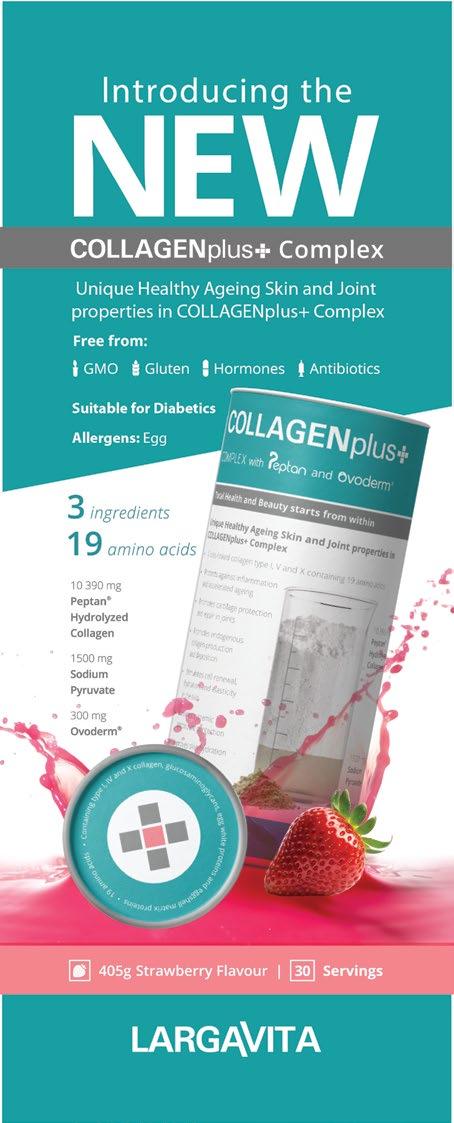

One of the principles of Hippocrates’ understanding of human well-being, was the underlying idea that all organ systems are interconnected; that the whole is greater than the sum of its parts.
We are an extension of the environments that we inhabit, the natural world, our family systems, and our work corporations. Our microbiomes are an ongoing conversation with the ecosystems of our soil; the microbes that feed and nourish our food are the very microbes that inhabit our guts and communicate with our brains.
A non-dual understanding of health is a scientifically defensible idea. The term ‘holobiont' refers to a host organism that harbours a diverse community of symbiotic microorganisms, such as bacteria, fungi, and viruses, which collectively form a functional unit with the host. Examples of holobionts include humans with their gut microbiota and corals with their associated zooxanthellae algae.
Beyond these microscopic connections, we are communal animals and our relational dynamics can either invigorate or diminish us. Dis-ease is a symptom of the many ways in which we lose connection with ourselves, each other, and our environments.
How can we heal when we narrow our healing to one organ system or one medicine?
This is especially true of mental dis-ease.
While our life expectancy has improved dramatically (with an average increase of over 20 years since the 60s), the proportion of time that we spend unwell has not diminished at all. I would argue that we are more unwell than we have ever been as a species, and I believe that this is largely due to our work culture, our food systems, and the pervasive use of chemicals and plastics that are infiltrating every aspect of our lives.
A PubMed study recently investigated the presence of microplastics in atherosclerotic plaques. Certain patients with atherosclerosis (a deposition of cholesterol particles in their blood vessels) were shown to have microplastics within the actual plaque, and a higher chance of dying from heart attack or stroke than those controls with the same disease, but free from microplastics.
I don't mean to depress you. Rather, I want to remind you of the power that you have as a consumer and as a person seeking to heal your own disease on every level.
We have so many opportunities in our day to soften the impact of our choices on the planet and our bodies.
What you listen to, who you surround yourself with, and what you put in your mouth has a measurable impact on the microscopic beings that co-create your aliveness in every moment. If you fully surrender to the interconnectedness of all things, you will forfeit your aloneness . We spend so much time
and energy investing in our work culture and our ability to generate income, that we often forget to pay attention to all of the other pieces of the wellbeing wheel that contribute to contentment and fulfilment. Your career is only one slice of a multifaceted world. Are you paying attention to your relationships, your physical body, and your connection to source?
When we appreciate the impact of our thoughts and actions on our cellular health, we can embody more vibrancy and joy. Studies examining the microbiomes of meditating monks show an obvious reduction in risk for depression and anxiety. The American Heart Association has now listed depression as a risk factor for heart disease. There is an undeniable link between the thoughts we think and the wellbeing of our bodies.
There are so many bidirectional conversations happening within you. Your gut-brain axis, heartbrain axis, liver-gut axis. We embody the principles of community. No organ system exists alone.
So, at a time in the world when there is such an excess of toxic information and unhealthy sustenance, we have a responsibility to educate ourselves and our loved ones about how we can feed our bodies and minds for healing.
Dr Skye Scott is a co-founder of Health with Heart with her partner, Dr Melinda Whitfield. Together, they run integrative and holistic wellness programmes, on-site clinics and healing experiences for the corporate world. She also hosts a podcast that explores ideas of individual and collective wellbeing. For more information or to get in touch, visit www.healthwithheart.co.za or follow @drskyescott on Instagram.
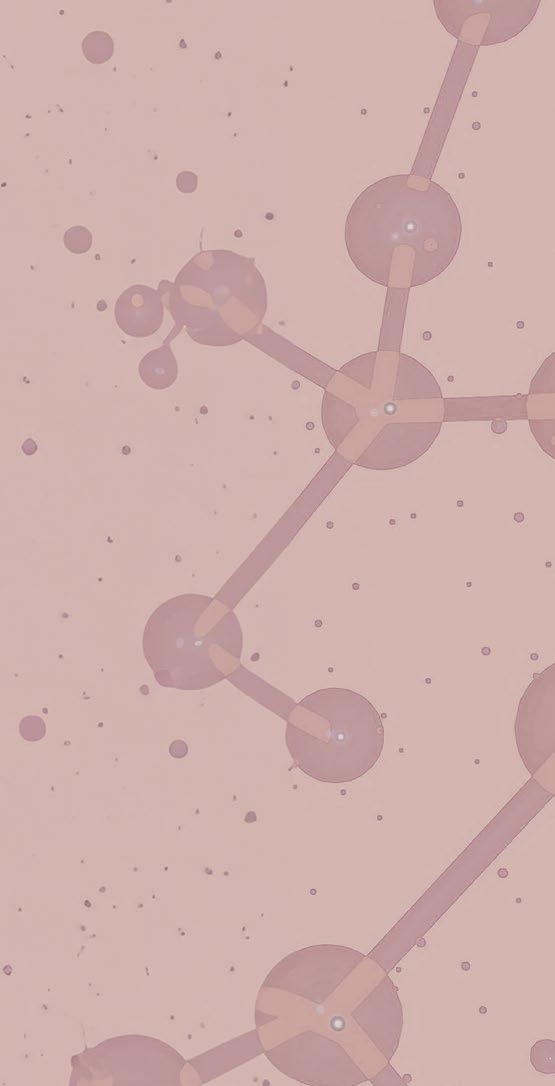




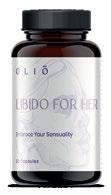
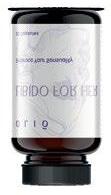


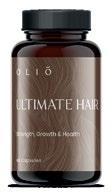

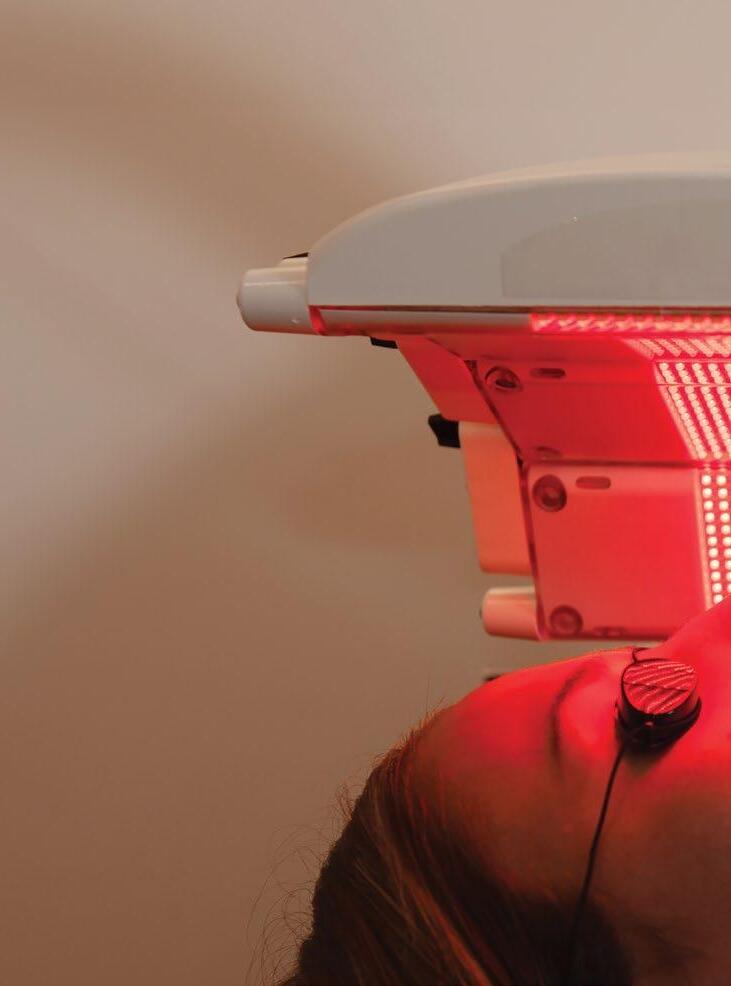
The reputation of the red light is a typically distressing one, with red traffic lights, low battery indicators, and emergency alarms coming to mind. There is one context in which red light is associated with something far more positive, though – and for good reason…
Red light therapy (RLT) is a promising treatment which utilises the low-level wavelengths of red light to help treat a number of skin conditions.
How does it work?
When red light is shone on your skin for an extended period, it can penetrate the skin barrier and increase the resources (electrons, oxygen, etc.) received by the mitochondria of your skin cells, allowing it to function more efficiently.
















The efficiently functioning mitochondria will then increase blood flow to the area, reduce inflammation, and stimulate collagen and fibroblast production, essentially refortifying its formation and repairing itself with gusto - allowing you to see improvements in your overall skin health.
By undergoing RLT for an extended period of time, you may start to see a reduction in some of the most typical skin concerns, including wrinkles, fine lines, age spots, sun damage, acne scars, and stretch marks.
Moreover, red light therapy has also been found to have a positive effect on skin afflicted by psoriasis, rosacea, and eczema; to assist with wound healing; to treat androgenic alopecia (male or female pattern baldness); and even to assist in pain management.
Which is better: in-clinic or at-home red light therapy?
Red light therapy uses light that is non-ablative and non-thermal, thus it is generally non-invasive, side effect-free, and safe for at-home use.
However, LEDS are not all made the same (varying in strength, wavelengths, etc.), and so -depending on whether you buy a device or book a treatment - you might be looking at a different timeline for results.
Although receiving the treatment from a dermatologist (or any other trained skincare professional) will be more effective per treatment, buying a mask, lamp, or wand is usually more costeffective over time, and often allows you to be more consistent through its convenience - thus increasing the likelihood of seeing results sooner rather than later.
After consulting your skincare provider, it is best to consider your lifestyle and goals before choosing between the two treatment options.

GENTLE IRON WITH SUPPORTING NUTRIENTS
Micro-encapsulated liposomal iron for 5x better absorption.
Micronised iron liposomes
INGREDIENTS THAT MAKE FERRITONE EXCEPTIONAL Fe3+
Buffered Vitamin C for enhanced absorption
Active Vitamin B9 supports red blood cell formation
Active Vitamin B12 for energy and red blood cell formation
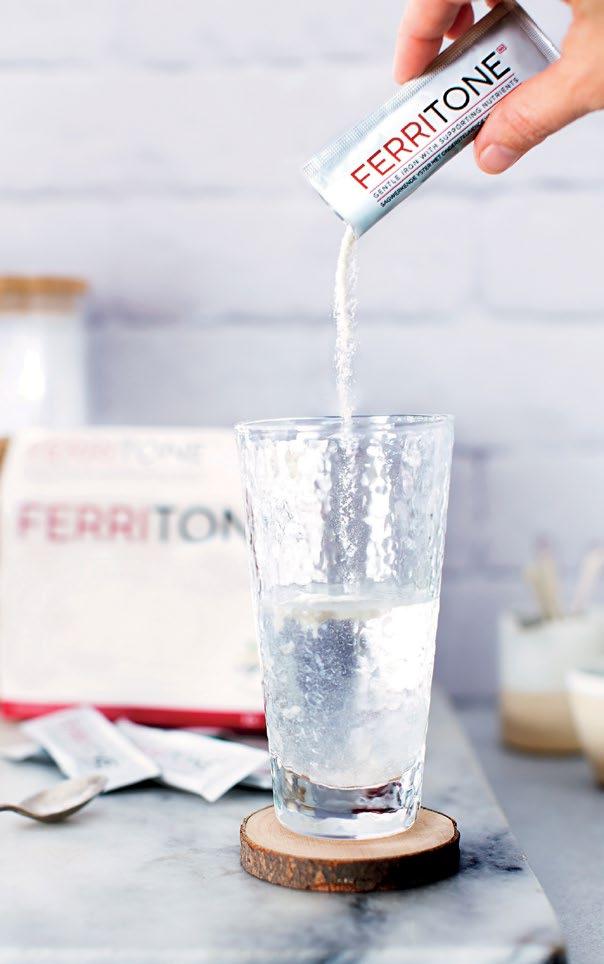
• Convenient single dose sachets
• Pleasant, natural vanilla flavour
• Premium ingredients
• Improved bioavailability
• Easily absorbed


F rom chilly outdoor air to indoor heating, our skin loses moisture during the colder months. Winter is the perfect season to hydrate from head to toe and pamper your skin by adding facial masks to your skincare routine.
Whether powder, liquid, cream, or sheet masks, these versatile treasures can be used at home with DIY options, ready-made products, or professional facials.
My combination skin has been unusually dry and dull recently. I had a choice between a DIY avocado and honey mask and a sheet mask. I opted for the hydrating sheet mask, which quickly restored radiance and hydration with its functional ingredients.
Let’s explore some different mask options…
• Hydrating cream masks are great for dry skin. For even deeper nourishment, apply overnight to replenish while you sleep.
• Sheet masks are wonderful little mini facials! Convenient, with no prep needed, and immediate results. Common bases for the sheets include hydrogels, cotton, and bio-cellulose. Cotton is breathable and suitable for sensitive skin. Some bio-cellulose masks derived from coconut water excel at moisture retention, adherence, and delivering ingredients. Bubble masks foam up due to oxygen during application, and the oxygen combats bacteria, rehydrates the skin, repairs, and helps to boost collagen. Serum infusions in sheet masks can include glycerine, acids, vitamins, minerals, collagen, peptides, antioxidants, tea, and herbal extracts. Where possible, opt for eco-friendly, biodegradable sheet masks made from tencel, microfibre, cellulose, or hydrogel.

• Exfoliating masks remove dead skin cells. Typical ingredients include apricot kernel, coffee, clay, seaweed, and walnuts.
• Gel masks work well for inflamed, dehydrated, sensitive, or mature skin. These hydrating gel formulas are based on water or aloe vera. When paired with antioxidants like vitamin C, niacinamide, collagen, and hyaluronic acid, they can offer anti-ageing advantages.
• Peel-off masks contain purifying agents, vitamins, and tea extracts. As you peel off the mask, dirt, dead skin cells, and oils are gently removed, which is ideal for acne-prone skin. Avoid these if your skin is mature or irritated (opt for gel masks instead).
• Hydrogel masks are thick sheet masks made from a jelly-like substance infused with serums. The hydrogel melts and hugs your face, providing deep moisture in dry winters. Target fine lines by using an undereye hydrogel eye mask with retinol A or collagen.
• Mud masks like dead sea and silica muds hydrate, exfoliate, heal, fight bacteria, and remove impurities. For sensitive and sun-damaged skin, opt for calming Moor mud.
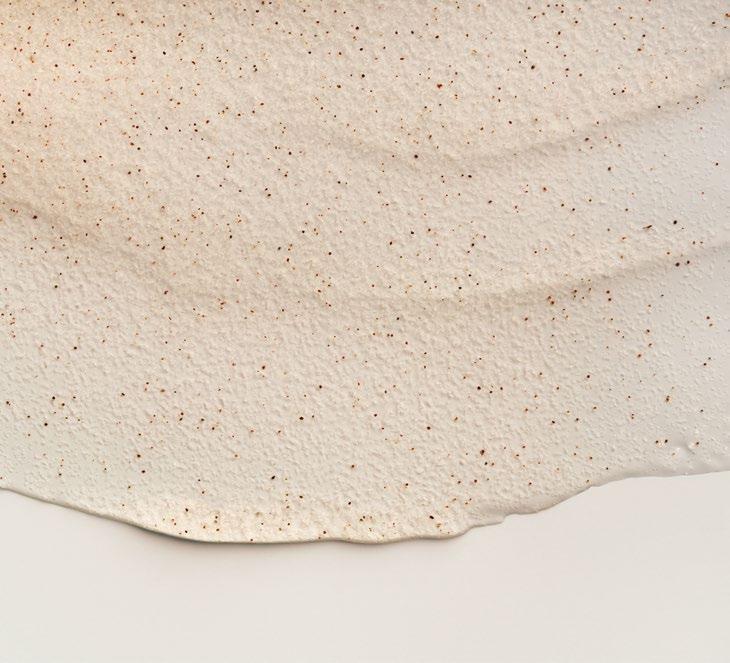
Masks have an occlusive or blanketing effect, meaning that they stay on your skin for a long time, allowing the active ingredients sufficient time to work. Depending on the ingredients and purpose, a mask can trap moisture and create a film that hydrates, moisturises, dries, or exfoliates.
You may have to try a few to find the one that works for your skin. The frequency of use depends on your skin's needs and the mask type.


• Clay masks absorb oils, brighten skin, calm inflammation, and prevent acne. Rich in minerals, clay masks cleanse the skin, boost collagen, defend against breakouts, refine pores, and enhance facial radiance. Commonly used clay types in masks and cosmetics include:
- Kaolinite to help boost elasticity and reduce fine lines
- Bentonite to detoxify
- French green clay to tighten
- Rhassoul clay to fight acne and impurities
- Pink clay to brighten all skin types
- Yellow clay to correct sun-damaged and dull skin


Prefer DIY? Here are some ideas:
• Avocado and honey mask
• Yoghurt and oatmeal mask
• Turmeric and yoghurt mask
For optimal results, cleanse and tone your skin before application, then moisturise promptly afterward.
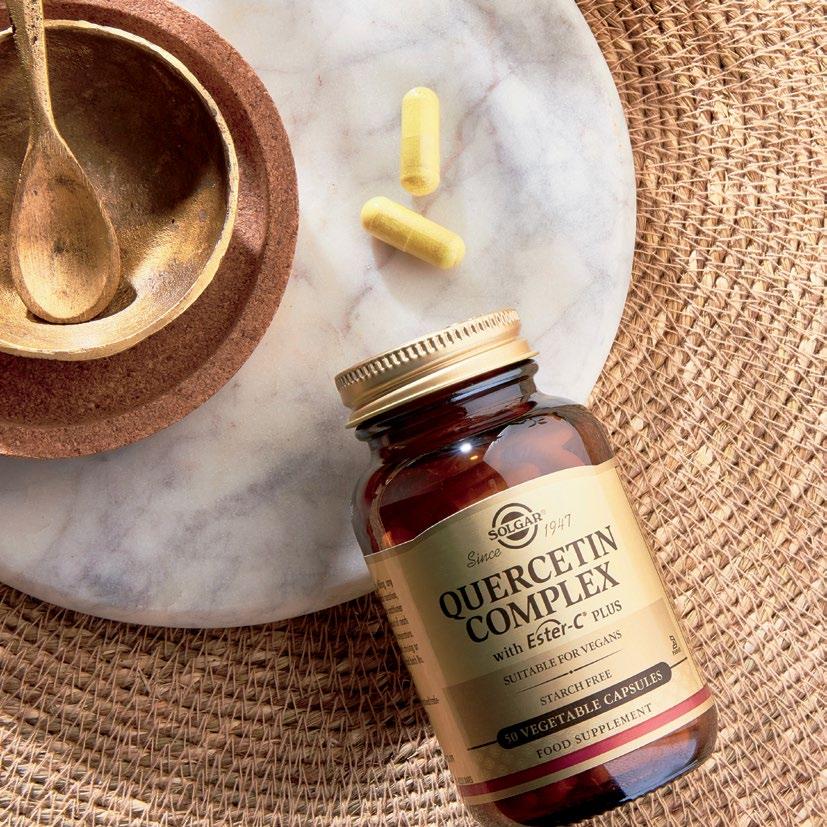
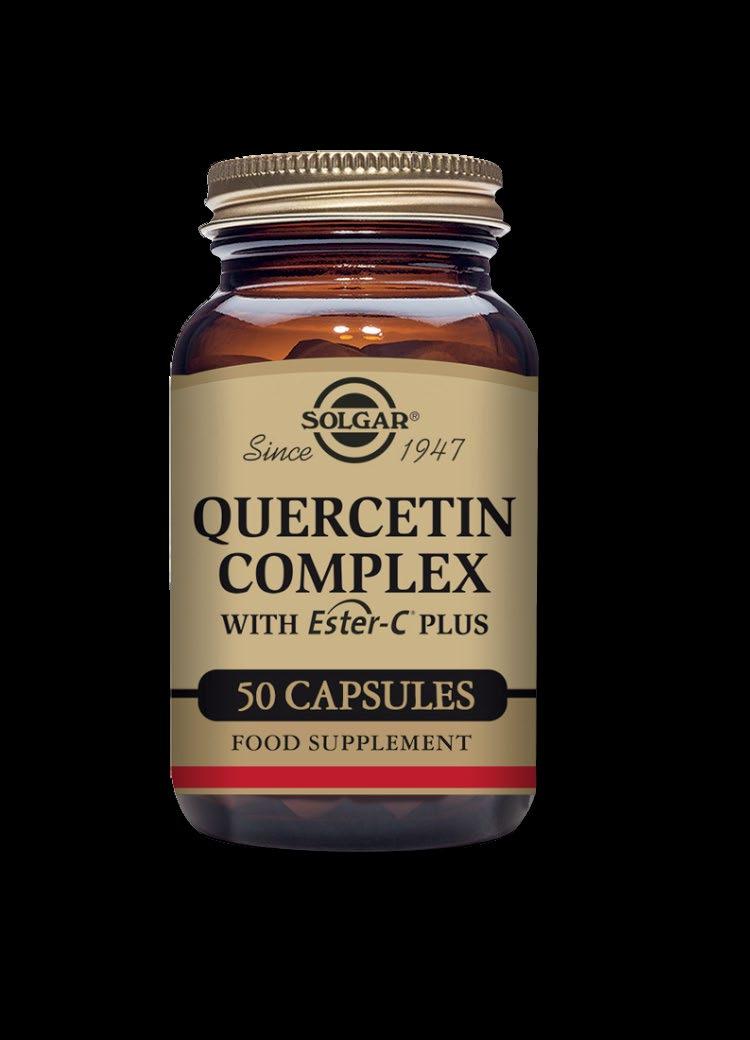

While the focus has long been on hair products and styling techniques, a paradigm shift is underway, recognising that a healthy scalp is the foundation for vibrant, resilient strands.
The Scalp: The Unsung Hero
Nestled beneath our crowning glory lies a bustling ecosystem that is too often neglected: the scalp. Comprising hair follicles, sebaceous glands, and blood vessels, the scalp plays a pivotal role in hair growth and overall hair health. However, factors such as pollution, stress, product build-up, and genetic predispositions can disrupt its delicate balance, leading to a myriad of issues including dandruff, itching, dryness, and hair loss.
In response to growing concerns over scalp health, a wave of innovative scalp-focused products has hit the market, catering to diverse hair types and concerns. From clarifying shampoos and exfoliating scrubs to soothing tonics and nourishing masks, these formulations target specific scalp needs, providing a tailored approach to hair care.
At the heart of the scalp care revolution lies a deeper understanding of its intricate biology. Scientific advancements have unveiled the pivotal role of the scalp microbiome - the community of microorganisms inhabiting the scalp. Just as gut

health is essential for overall wellbeing, maintaining a balanced scalp microbiome is crucial for healthy hair growth and scalp function. Probioticinfused products and prebiotic scalp treatments are gaining traction, offering a gentle yet effective approach to nurturing the scalp microbiome.
Much like our skin, the scalp requires periodic detoxification to remove impurities and stimulate circulation. Scalp exfoliants, enriched with gentle acids and enzymatic agents, help slough off dead skin cells, unclog pores, and promote cell turnover. Regular detox rituals not only rejuvenate the scalp, but also enhance the efficacy of subsequent hair care products, ensuring optimal absorption of nutrients.


In the quest for healthier, more resilient hair, consumers are embracing a holistic approach that transcends surfacelevel treatments. Mindful practices such as scalp massage, aromatherapy, and stress management are gaining recognition for their ability to enhance scalp health and promote relaxation. By addressing the underlying factors contributing to scalp imbalances, these rituals can offer a holistic solution to common hair woes.
Just as we all have different skin types, we also have varying scalp types.
A sensitive scalp can easily become irritated by exposure to the sun or harsh chemicals found in shampoos and hair products. This irritation can be alleviated by opting for oatmeal or clay-based hair products. Additionally, choosing hypoallergenic shampoos and other hair care items can help avoid exacerbating scalp sensitivity.
Dry scalp is another common concern that can lead to discomfort and selfconsciousness due to issues such as dandruff and scalp psoriasis. Regularly moisturising the scalp can provide significant relief without making the scalp excessively oily. Coconut rosemary oil are both effective options readily available at your local pharmacy. Incorporating hydrating shampoos into your hair care routine can also assist in combating dry scalp issues.
Managing an oily scalp can be challenging, as it often leads to hair appearing greasy even after washing. However, there are strategies to address this issue. While oil production is essential for scalp health, traditional dry shampoos may exacerbate the problem by merely absorbing oil and sitting on the scalp, potentially causing further irritation. Instead, opt for oil-regulating products and allow them sufficient time to take effect by using a shower cap. With consistent use, these products can help regulate scalp oiliness, typically yielding visible results within a few days to a week.
Choosing gentle, sulphate-free hair products is crucial for maintaining the health of all scalp types.

As the beauty industry continues to evolve, the significance of scalp care is poised to deepen, reshaping the way we approach hair care rituals. From personalised formulations tailored to individual scalp profiles to cutting-edge technologies that optimise scalp health, the future holds boundless possibilities for innovation and discovery, and we’re so here for it!

Sleep
Calm
Beauty
Detoxification
Immunity
Digestion
Nursing

Essential oils, small vials of concentrated plant compounds, boast a rich history dating back to 4 500 BC. While the process of extraction and curation has evolved over time, these same beneficial and healing oils remain indispensable today.
Throughout history, essential oils have been prescribed as remedies for various ailments and employed in diverse ways, with aromatherapy emerging as one of the most prominent applications. When the aromas of essential oils are inhaled (typically dispersed through diffusers, lamps, or burners), they can stimulate areas of the limbic system. This part of the brain influences emotions, behaviours, and long-term memory, as well as physiological functions like breathing, heart rate, and blood pressure.
Optimising your environment with aromas can potentially elevate your mood, increase energy levels, and infuse a touch of magic into everyday life. Aromatherapy can become a powerful tool for habit stacking, shaping the trajectory of your day.
Unlock the potential of aromatherapy in every space…
Bedroom
Lavender , a classic essential oil reminiscent of sunny garden days, can aid in stress relief, pain management, and promoting restful sleep. Infuse your bedroom with this scent as you unwind with a good book, embracing the calming sensations it induces.
Office
Consider adding peppermint oil to your essential oil burner in study or work areas. This invigorating scent can boost energy levels, alleviate headaches, and uplift sagging moods.
Kitchen
Citrus oils, such as lemon, lime, orange, grapefruit, lemongrass, and bergamot, bring a refreshing presence to busy kitchens. Linked to reduced anxiety, depression, pain, and nausea, these oils add brightness to culinary tasks and can enhance your mood while tackling chores
Bathroom
Elevate your self-care routine by infusing floral oils into your bathroom
ambiance. Rose geranium , known for its anxiety-reducing and euphoric properties, adds a sense of balance and calm. It may also offer relief from symptoms associated with PMS and menopause.
Lounge
Diffuse cinnamon oil in your lounge to create a warm, inviting atmosphere. This comforting scent can help to uplift the mood and energise body and mind, making it perfect for cosy evenings or entertaining guests.
If the array of essential oils on offer seems daunting, try pre-blended oils tailored to your mood (like the Wellness Calm , Breathe , and Dream blends) for a beginner-friendly entry into aromatherapy.

FIND YOUR FAVOURITE ESSENTIAL OILS IN STORE, OR SCAN THE QR CODE TO SHOP THEM ONLINE


Be ready for any situation with
SOiL trio sets
FIRST AID
Eucalyptus essential oil soothes and heals
Lavender, Tea

EXHALE
relax and de-stress
De-Stress, Frankincense, Rose Geranium essential oil
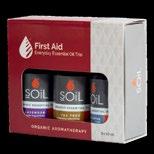


INHALE

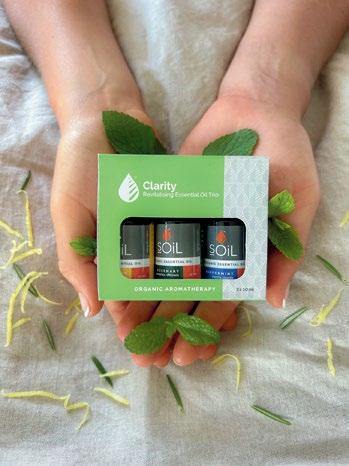 Available at Wellness Warehouse stores
fights cold and flu Cedarwood, Easy Breathe, Sweet Orange essential oil
Tree,
revitalises mind, body and home
Peppermint, Rosemary, Lemon essential oil CLARITY
PURE CERTIFIED ORGANIC
Available at Wellness Warehouse stores
fights cold and flu Cedarwood, Easy Breathe, Sweet Orange essential oil
Tree,
revitalises mind, body and home
Peppermint, Rosemary, Lemon essential oil CLARITY
PURE CERTIFIED ORGANIC

The birth of a child is undoubtedly a joyous occasion, but amidst the celebration of new life, it's crucial not to overlook the well-being of the new mom. While much attention is rightly placed on the care and nurturing of new-borns, the importance of caring for new mothers during the post-natal phase cannot be overstated. This period, often referred to as the fourth trimester, is a time of significant physical, emotional, and mental adjustment for mothers. Prioritising their care during this critical phase is not just beneficial for them, but also for the entire family unit.
First and foremost, it's essential to recognise that the post-natal phase can be physically demanding for mothers. The toll of childbirth on the body is significant, regardless of whether it was a vaginal birth or a caesarean section. Mothers may experience pain, discomfort, and fatigue as their bodies recover from the birthing process. Providing ample rest and opportunities for relaxation is paramount. Encouraging new moms to prioritise self-care activities such as adequate sleep (insofar as possible!), nutritious meals, and gentle exercise can facilitate a speedier recovery and promote overall well-being.
Moreover, the postpartum period is often accompanied by a rollercoaster of emotions. Many new moms experience a range of feelings, including joy, anxiety, sadness, and overwhelm. Hormonal fluctuations, sleep deprivation, and the challenges of adjusting to their new role as a parent can all contribute to these emotional ups and downs. It's crucial for loved ones to offer unconditional support and understanding during this time. Simply being present to listen without judgment can provide immense comfort to new mothers as they navigate the complexities of parenthood.
In addition to emotional support, practical assistance can also alleviate some of the burdens faced by new moms. Friends and family can offer to help with household chores, meal preparation, and errands, allowing mothers to focus on bonding with their new-borns and taking care of themselves. Creating a supportive network of individuals who are willing to lend a helping hand can significantly ease the transition into motherhood.
Encouraging open communication about the challenges of motherhood can help new moms feel less isolated and more empowered to seek help when needed. Many women may struggle with feelings of inadequacy or guilt if they are unable to meet societal expectations of motherhood. Normalising these struggles and reassuring mothers that it's okay to ask for help can alleviate some of the pressure they may be experiencing.

• Offer to babysit or hold baby while mom takes a nap or enjoys some uninterrupted time for self-care.
• Prepare nutritious meals or organise a meal train to ensure that mom has access to nourishing food without the added stress of cooking.
• Help with household chores such as laundry, dishes, or cleaning to lighten the load.
• Encourage mom to attend postnatal support groups or seek professional help if she is struggling with feelings of depression or anxiety.
• Send thoughtful gestures such as flowers, cards, or care packages to let mom know that she is loved and supported.


Millions of pets are facing a health crisis, and the root cause may be closer to home than we realise. Obesity in pets is a growing concern, with significant implications for their health and well-being. Let's delve into the cold facts about overweight pets and why our love for them might be inadvertently harming their health…
Scientific evidence unequivocally highlights the detrimental effects of obesity on pets. Excess weight can trigger a cascade of health problems, ranging from inflammatory responses caused by adipose tissue to joint diseases like degenerative joint disease (DJD) or osteoarthritis. Heart disease, diabetes, respiratory issues, compromised immune systems, and even cancer become heightened risks in overweight pets.
Financially, the toll of caring for an overweight pet can be substantial, with expensive surgeries and prolonged recoveries looming as possibilities. Beyond the financial strain, the emotional toll of seeing our beloved companions suffer due to our actions is immeasurable.
The bond between humans and animals is profound, often intertwined with the act of feeding and nourishing. However, this bond can sometimes lead to detrimental behaviours, such as overfeeding out of a misguided sense of love. It's crucial to recognise that expressing love for our pets goes beyond providing food; it entails ensuring their health and longevity.
Misconceptions about ideal body weight abound, with many pet owners unaware of the severity of their pet's condition. Recent studies reveal alarming statistics, with 40 - 50% of pets classified as obese. Addressing this issue requires education and awareness.
Understanding what a healthy weight looks like for your pet is the first step. Consulting with a veterinarian or pet nutritionist can provide valuable guidance in formulating an appropriate eating plan tailored to your pet's needs. Investing in highquality, nutritionally dense food is an investment in your pet's long-term health and vitality.
Portion control and feeding at set mealtimes are essential strategies in managing weight. While those pleading eyes may tug at our heartstrings, true love means prioritising your pet's health and well-being above all else.
Shifting the focus from overfeeding to enrichment can deepen the bond between pet and owner. Incorporating activities like food foraging, healthy snacks, interactive toys, and regular exercise fosters a happier, more fulfilling life for our pets.
By preventing obesity and prioritising our pet's health, we can ensure that they live long, healthy lives by our side. Let's pledge to become mindful consumers, advocates for our pet's well-being, and stewards of their health for years to come.
Antoinette Smit is a veterinary nurse and physiotherapist. For more information or to get in touch, visit www.healinghandspetphysio.com.




The interplay between stress, sex, and holistic happiness forms a complex web of interactions that can significantly impact the overall wellbeing of both individuals and couples.
Stress, often viewed as an unavoidable aspect of modern life, can have profound effects on sexual health and satisfaction. Conversely, a fulfilling sex life can serve as a potent antidote to stress. Understanding and managing this intricate relationship is crucial for individuals and couples seeking to enhance their quality of life.
Stress, whether stemming from work pressures, relationship difficulties, financial worries, or other sources, can wreak havoc on both physical and mental health. Elevated stress levels trigger the release of cortisol, the body's primary stress hormone, which can disrupt hormonal balance and impair sexual function.
Chronic stress has been linked to decreased libido, erectile dysfunction in men, and disruptions in menstrual cycles in women. Moreover, stress can lead to fatigue, irritability, and diminished emotional intimacy, further exacerbating issues within romantic relationships.Conversely,
a fulfilling sex life has been shown to reduce stress through various physiological and psychological mechanisms. During sexual activity, the body releases endorphins and oxytocin, often referred to as ‘feel-good’ hormones, which can induce relaxation and alleviate stress. Engaging in intimate acts also fosters emotional connection and intimacy between partners, promoting feelings of closeness and bonding. These positive experiences can buffer against the negative effects of stress, contributing to overall emotional resilience and wellbeing.

To cultivate a healthier relationship between stress and sex, individuals and couples can implement practical strategies aimed at reducing stress levels and enhancing sexual satisfaction:


• Prioritise self-care
Engage in activities that promote relaxation and stress reduction, such as mindfulness meditation, yoga, deep breathing exercises, or spending time in nature. Prioritising self-care not only reduces stress, but also enhances overall wellbeing, making you more receptive to intimacy.
• Communicate openly
Effective communication is essential for addressing stressors and maintaining a satisfying sex life within relationships. Create a safe and non-judgmental space to discuss concerns, desires, and boundaries with your partner. Honest communication fosters understanding and strengthens emotional intimacy, paving the way for a more fulfilling sexual connection.
• Schedule quality time together
Amidst the hustle and bustle of daily life, carving out dedicated time for intimacy is crucial. Schedule regular date nights or intimate moments to reconnect with your partner and prioritise your relationship. Disconnect from distractions such as electronic devices and focus on nurturing your emotional and physical connection.
• Explore new activities together
Inject novelty and excitement into your relationship by exploring new sexual activities or fantasies with your partner. Experimenting with different techniques or introducing sex toys can reignite passion and spark creativity in the bedroom. Open-mindedness and a willingness to explore can enhance sexual satisfaction and deepen intimacy.
• Practise stress-reducing techniques during sexual activity
Incorporate stress-reducing techniques such as mindful breathing or progressive muscle relaxation into your sexual encounters. By focusing on the present moment and cultivating a sense of relaxation, you can enhance pleasure and intimacy while reducing performance anxiety or stress-related tension.
• Seek professional support if needed If stress or sexual difficulties persist despite self-help strategies, consider seeking support from a qualified therapist or counsellor. Professional guidance can provide personalised interventions and support tailored to your unique needs, helping you navigate challenges and cultivate a healthier relationship with stress and sexuality.

Silence is not golden when it comes to exposing and preventing bullying in the workplace. There is plenty of evidence demonstrating the detrimental effect of keeping quiet about witnessed bullying in the workplace. The impact of failing to take action when bullying is reported is also well reported. The question is: what can you, as an employer, do to create conditions conducive to employee voice; where employees feel safe to give voice to their concerns and hopes?
What is employee voice? Simply, it’s a work environment where employees feel safe to express opinions, suggestions and provide feedback freely at work, even when they know their view is not going to be popular.
The Chartered Institute of Personnel and Development (CIPD), a global UKbased body that specialises in HR and people development, defines employee voice as ‘the mechanism by which people communicate their views to their employers and influence matters that affect them at work’. If we accept this definition, then we can also accept that nothing has a more negative effect on people at work than bullying. In such a situation, oppressing the employee voice is like pouring boiling oil on a raging fire.
An employee has the ability to voice their concerns and provide feedback only if the leader is intent on creating a work environment where people feel safe, included, and can be expressive. But, creating an environment – or laying down the policy – is one thing. It’s the provision of operational structures that make it possible for employee voice to sound loud and clear that really counts. Those structures include comprehensive procedures and communication channels that create open access to the organisation’s leaders.
Interestingly, researchers who have studied organisations, to get a sense of their overall well-being, have found that the same strategies that can be used to encourage employee voice can also be leveraged to lift the lid off the silent epidemic of bullying in modern organisations. This is because voice oppression, or the fear of speaking up, always comes up as a factor that allows bullying to thrive.
There are two types of employee voice: individual voice, and organisational voice . Individual voice refers to situations where individuals speak up about issues that are important to them. This category includes what is referred to as upward voice by Elizabeth Morrison, Professor of Management and Organizations at New York University Stern School of Business. Morrison explains that this is ‘when employees voluntarily communicate suggestions, concerns and information about problems to someone in a higher position in their organisation’.
Note the operative word here: voluntarily. This is crucial, because it means that employees don’t feel forced to speak up; rather, they do so of their own free will, and would speak up even in situations where the information they are communicating would be considered bad news. Upward voice is also commonly known as direct voice, because it acknowledges that employees can speak directly to their line managers or anyone else in a position of authority.
Organisational voice, on the other hand, refers to the structures and processes that are in place which employees can leverage to convey their views. These include employee surveys, which seek to help the organisation understand how the presence or absence of employee voice affects issues such as employee engagement, job satisfaction, and the extent to which employees feel included, or that they belong. Organisational voice is sometimes known as indirect voice, because rather than conveying their suggestions or insights directly to management, employees relay their thoughts, dissatisfaction and concerns via surveys or other channels that have been established for this purpose. Even then, the information seldom passes on to management unfiltered. It usually passes through intermediaries first, such as committees, or even unions and shop stewards.
A human-centred workplace encourages both individual and organisational voice, giving each equal weight because they are both two sides of the same coin. Thus, there is room for both in a speak-up culture.
For such a culture to grow and flourish, employers must reward, rather than punish, those employees who have the courage to speak up. While this might sound like common sense, it’s important to have this courage publicly acknowledged, because many people hold back out of fear of punishment, further intimidation or threats.
In line with this, leaders must make it widely known that they put people first. The best way to do this is by demonstrating, in a highly visible manner, that they are open to receiving unsolicited feedback. That word ‘unsolicited’ is key, because the feedback we hear without first requesting it is seldom positive. Leaders therefore also require courage, because it takes mettle to hear such views, and more importantly, to accept them.

Want to read more? Get your copy of Building Psychologically Safe Spaces: Safeguarding Your Workplace Against Bullying by Ngao Motsei. Published by Tracey McDonald Publishers, and available in good book stores and online.


The manner in which I got my first job was perhaps an indication that my working life was going to be a ball of fun and an unpredictable bowl of ingredients that would eventually come together to make something delicious – skills and passion finished off with a drizzle of talent and a large dollop of purpose.
‘Purpose’ is a concept I had to understand and which I often speak on. To me, purpose is the intersection where passion and talent meet. The two are both vital to purpose; there are, for example, some people who are talented but who lack passion. Nelson Mandela, for instance, was a talented boxer in his early years but that was definitely not his passion, and therefore it was not his purpose.
In my case, I am extremely talented at putting events together, from conceptualisation to implementation and execution, but I have absolutely no passion for the attention to detail it requires. Thank goodness I have now landed on the other side of events, where I am part of the event. My past experience of putting events together has, however, made me very understanding of the organisers, because I understand what it takes to put a successful event together.
An example on the other side of this equation is the ‘wooden microphone’ category in the talent-search competition Idols South Africa, for people who have a passion for singing but not necessarily the talent for it!
This reminds me of when I was young and dreaming of being behind a microphone. I initially thought that my imagination was telling me to be a singer – that singing was my passion – so I asked my mom to drop me off at the auditions for Popstars (South Africa) one morning. I did not even make it through the preliminary round but it was a great experience – I found out that while I may have loved singing, I did not have a talent for it. Today, I use my microphone to help others have constructive conversations and to be the golden thread in conversations, ensuring there is direction to achieve objectives at any level in a hierarchy. It is both my talent and my passion – it is my purpose.

Life has a beautiful way of bringing together the passion and talent for you in an attempt to give you tools to reach your purpose – I have never met a person who is living out their purpose and who does not have both the passion and talent for it. I encourage an exercise to undertake if you are struggling to figure out what your purpose is. It will require a bit of time and complete honesty, and you will have to try to be objective. It may not give you the answer like a loudsounding gong but it will certainly give you an indication and direction towards the correct route.
Write down all your passions. Next, write down your talents. Now review both lists and try to determine which passions and talents can co-exist…
Want to learn more?
Get your copy of the inspirational Finding Purpose book by Thami Nkadimeng, published by NB Publishers and available at leading book stores and online.


I n an era dominated by digital devices and constant connectivity, the concept of a ‘digital sunset’ offers a refreshing perspective on reclaiming balance and promoting wellbeing in our homes.
Just as the natural sunset marks the end of the day and invites tranquility, creating a digital sunset at home can serve as a symbolic boundary, signalling the transition from the hectic pace of technology to a restorative environment conducive to health and happiness.
A digital sunset involves consciously disconnecting from electronic devices and digital stimuli during the evening hours, allowing individuals and families to unwind, connect with loved ones, and prioritise self-care. By setting boundaries around technology use and embracing analogue activities, such as reading, engaging in hobbies, or spending quality time with family, a digital sunset can help to foster a sense of balance and mindfulness in our increasingly digital lives.
The benefits of implementing a digital sunset at home extend beyond mere relaxation; they encompass enhanced physical health, improved sleep quality, and strengthened relationships. Here are some practical tips for creating a digital sunset and cultivating a healthier, happier home environment:
- Establish clear boundaries
Set specific times during the evening when electronic devices are put away or turned off entirely. Designate certain areas of the home, such as the dining room or living room, as technology-free zones during the digital sunset period. Establishing clear boundaries helps create a sense of structure and discipline, making it easier to disconnect from screens and focus on other activities.




- Create a soothing evening routine
Incorporate calming activities into your evening routine to signal the start of the digital sunset. This could include dimming the lights, playing soft music, or practising relaxation techniques such as meditation or gentle stretching. By transitioning gradually into a state of relaxation, you can ease the transition away from digital devices and prepare your mind and body for restful sleep.
- Prioritise face-to-face interaction
Use the digital sunset as an opportunity to connect with family members or housemates on a deeper level. Engage in meaningful conversations, play board games, or share stories from your day without the distraction of screens. Fostering genuine human connection strengthens bonds and nurtures emotional wellbeing, contributing to a more harmonious home environment.
- Embrace analogue activities
Rediscover the simple pleasures of activities that don't require screens or technology. Whether it's reading a book, writing in a journal, or pursuing a creative hobby, engaging in offline pursuits can stimulate your mind, reduce stress, and foster a sense of fulfillment. Encourage family members to participate in activities that bring them joy and allow them to disconnect from the digital world.
- Practise mindful eating
Use mealtimes as an opportunity to practise mindfulness and savour the sensory experience of eating without distractions. Turn off the television, put away smartphones, and focus on the flavors, textures, and aromas of your food. Eating mindfully not only enhances the enjoyment of meals, but also promotes healthier eating habits and digestion.
- Create a technology-free bedroom
Designate the bedroom as a sanctuary for rest and relaxation by keeping it free from electronic devices. Remove televisions, computers, and smartphones to minimise exposure to blue light, which can disrupt sleep patterns. Establishing a technology-free bedroom promotes better sleep hygiene and allows you to unwind more effectively at the end of the day.

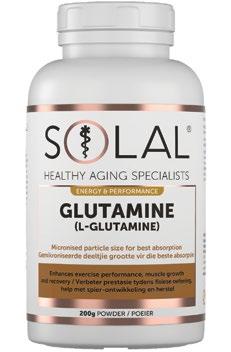
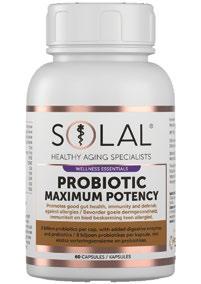



Health and Wellness Work plays an enormous part in our lives and has an enormous impact on our health and happiness; and our health and happiness have an equally important impact on the quality of our work. When we look after our health and wellness, we are able to work better and be more efficient, effective and creative.
While it is incumbent on us to look after our own health in order to have a happy and productive life, there are some work-related health challenges that are important to be aware of in order to prevent or minimise them and the impact they could potentially have on our ability to make work work for us.
Burnout is a state of emotional, physical, mental, spiritual, and relational exhaustion caused by excessive and prolonged stress. We get burnout when we feel overwhelmed, emotionally drained, and unable to meet the constant demands we face.
Global levels of stress and burnout in the workplace have been on the rise for more than a decade, and in 2023 remained at a record high, according to American analytics and advisory company Gallup, which conducts an annual report into the state of the global workplace by polling 116 countries.
I believe that we get burnout, not from doing too much, but from doing too much of the things that are wrong for us.
It is alarmingly apparent in these strange and stressed post-pandemic times that burnout is also a response to having lived through, and to be living in, a time when so much of what was and is happening to and around us is and has been very, very wrong for us. We have all been stretched too often and too far by events in the last few years, and are all at increased risk of burning out.
There are a number of deep-seated reasons why some of us are more vulnerable to developing burnout than others. Those of us who constantly seek approval and affirmation, who judge ourselves without mercy, who struggle to ask for help, who can’t imagine saying ‘no’, and who have the ‘others-centredness’ or ‘rescuer’ genes are very likely to drive ourselves to the point of exhaustion and being completely overwhelmed – and beyond.
Burnout comes calling when we are doing not only too many of the wrong things – the things that drain us and make us stressed, angry and resentful – but also not enough of the right things – the things that feed us, restore us and re-energise us. When we have burnout, we feel as though we have nothing left to give and all of our resilience is gone.
Resilience is often described using an analogy of a rubber band, and its ability to bounce back after being stretched. We all have some level of resilience, and we have all bounced back many
times after periods of stress and discomfort. As with all things, however, resilience requires some moderation, because when a rubber band is stretched too often or too far, it either snaps or it loses all its bounce. We’re the same; when we’re stretched (or stretch ourselves) too often, too far or for too long, we’ll break or we’ll lose all our energy and enthusiasm. That, in a nutshell, is burnout.
When we have burnout, we aren’t just physically tired or emotionally delicate. We don’t just feel existentially unsure or question all our life choices. (This is why I recommend that my burnout clients try to recover from their burnout before making any drastic life- or career-changing decisions.) It’s not only that our brains feel mushy and we struggle to remember things. We aren’t merely easily irritated and disappointed. It’s all of these things –and more. Burnout impacts everything. And the more serious the burnout, the greater the impact. Burnout is a systemic condition that affects every element and aspect of our lives – it is by no means confined to work. But if we do not address it, and we allow the exhaustion and state of overwhelm to continue, we may begin to lose the enthusiasm and interest that drew us to our jobs in the first place.
Burnout can turn work that we valued and found rewarding in every way into something that we resent and recoil from –not because the work has changed but because we have run out of energy and enthusiasm to appreciate it and do it well.
Paradoxically, while burnout makes us and our life force feel diminished, it simultaneously amplifies many of our responses. What might have made us slightly irritable before burnout can send us into a white-hot rage while in burnout. Instead of nibbling a square of chocolate after supper, we demolish a whole bar. Instead of feeling a little bit tired after mental or physical exertion, we feel flattened. Things that used to make us feel a little bit sad become devastating.



Tiny sniffles are fast-tracked to bronchitis or pneumonia. A couple of years after I stopped working at the job from hell, I found myself in the surprising – and surprisingly lovely – position of training police officers. From the very beginning, I was acutely aware that the vast majority of the men and women attending the classes would start their days with coffee, caffeinated energy drinks, chocolate or cigarettes – and often a combination of all of those ‘Cs’.
What I suspected then and know definitively now is that they were all in varying stages of burnout. They were beyond exhausted on every level –physical, emotional, mental, spiritual and relational – and were essentially running on the fumes provided by the cortisol-producing fuel they were inhaling. Craving sugar, starchy foods and coffee is always a warning that we’re low on energy reserves and needing to kickstart our bodies with caffeine and carbs – the ‘bad stuff’.
Some of the other, less visible signs of burnout include headaches, sleep disturbances, digestive ailments, anxiety, impaired concentration, social isolation and withdrawal from relationships, and a feeling of ‘what’s the point?’ Burnout is an ‘existential emergency’ because the things that used to feel meaningful and important are no longer rewarding or satisfying.
Burnout starts small but, left unchecked, escalates rapidly and can soon make life feel overwhelming and terrifying. Starting with being in a too-cold environment with horrible pictures on the wall, and moving up to doing work that you are morally and ethically at odds with – and anywhere in between – too much of the wrong thing/s will eventually result in burnout.
When we take on too much, especially too much or too many of the things that make us feel cross, resentful or anxious, we run the risk of developing burnout, not just because we’re awash with negative emotions much of the time, but also because we don’t have the space to do the things that are right for us, and that restore our energy and enthusiasm for life.

Unless we pay attention to the burnout and intervene to reverse it, it will progress, and the symptoms will worsen. The irritability will become anger. Our quality of sleep will deteriorate into insomnia, which in turn will result in heightened anxiety and worsening physical exhaustion. As a way of trying to make ourselves feel better and treat our growing anxiety and discomfort, we may try to self-medicate by consuming more and more alcohol, prescription and non-prescription drugs, and other substances like energy drinks and chocolates, which may make us feel better in the short term but over time only add to our growing distress and dis-ease.
A not surprising consequence of this progression of burnout symptoms is a breakdown of relationships, an increase in chronic illnesses, and – often – depression. As I warn my clients, if we leave burnout untreated, it can result in one or more of the dreaded three ‘Ds’: depression, diabetes and divorce.
Burnout and depression are often mistaken for one another. It’s extremely important to know the difference, as their treatment is very different. Both burnout and depression involve a feeling of tiredness to the point of exhaustion; a feeling of not being able to function normally. It’s the quality of the exhaustion that differs, and it’s a very important difference.
When we have burnout, we’re tired or exhausted by life, whereas when we have depression, we’re tired or exhausted of life. We get burnout when our life and the way we’re living it tires us out, when the choices we make and the actions we take are draining and debilitating. Depression has nothing to do with choices; it’s something that happens to us and, when it does, we start to feel tired of our life and as though we don’t want to be living it any more.
It’s an essential distinction to make because burnout, if caught early enough, can be self-managed and turned around, but depression requires professional help. If you or anyone you know feels tired of life, I urge you to take the necessary steps to get help as quickly as possible. You’re not alone –there are plenty of free and subsidised organisations that offer support to people struggling with depression and other mental health challenges.
Read more in Make Work Work for You: Life Lessons for the World of Work by Judy Klipin. Published by Bookstorm, and available in all good bookstores and as an e-book.



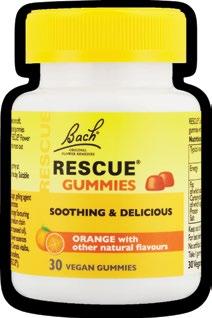




I struggled with the disease to please others for most of my life. It almost killed me. This condition travelled with me through a traumatic childhood, two divorces, a broken relationship with my mother, and – finally - two bouts of cancer by the age of 45. That was my breaking point. I was dying inside.
Recovering from the shock, my career in tatters, I began a radical journey of change. I sought relief in various forms, from reiki and reflexology to gurus and mushroom journeys. It took me from family peacemaker to wild and free adventure seeker. And in all the mess, and all the searching, I found my own healing.
During my healing process, I thought long and hard about how I became a people pleaser and how many other women just like me are suffering. I realised that I was one of many who suffer in this epidemic of people pleasing. Why? Because I wanted to be liked and loved, accepted, and to belong. We all want this. Often, we seek it from other people - and at what cost?

On my healing path, I realised the price I had paid for years of people pleasing, and that - in fact - selfworth and self-confidence come from ‘pleasing’ (or honouring) the self.
If your self-worth is at rock bottom or close to it, you may do what I did, and almost sell your soul in a desperate attempt to find some form of approval or love. This can end up in a relentless erosion of self-worth due to compromising what is true for you by violating your own values - just for a little validation and affirmation through your relationships with others.
Self-worth is the essence of our being and our birth right. It is the foundation on which we build our lives, and is determined by the choices we make. It is how we perceive ourselves, and the value we place on ourselves. These perceptions (both positive and negative) are formed in the very early stages of our development and become unconscious patterns of behaviour that can sabotage our lives.
The main reason self-worth is fragile is that human conditioning has disempowered us through the various influences and people in our lives. Many people find this world to be a lonely place, where we feel that we “don’t fit in”, and are left feeling that there is “something wrong” with us.
We are often expected to uphold family traditions, follow societal norms, and live according to the “scripts” of others and “the right thing”. These expectations guide the inner dialogues that conflict inside us between who we are and who we think we should be, based on our stories of the past and the people who have influenced our lives. The result is an innate fear of being our authentic selves.
The consequence of living your life on others’ terms is that you dim your own light and learn to look outside of yourself for validation and reassurance, relying on others for answers, approval, and direction.
Few people have the clarity, confidence, and courage to stand independently for what they believe in and who they truly are – fearlessly. The majority of us would rather “fit in” than “stand out” because we fear rejection or some sort of repercussion - loss of face, losing favour or popularity, or loss of relationships.
The biggest loss, of course, is losing ourselves in other people’s scripts because we fall into the trap of creating a persona we think will be likable and acceptable. We don’t feel safe to share our thoughts and inner struggles, and the fear of standing up or speaking out is very real.
These are some of the commonly shared struggles and pain I have witnessed over the past two decades
through the thousands of people I have coached and mentored, from graduates to CEOs across all industries and walks of life. I, too, have walked a long and painful road “wearing a mask” and hiding who I am so that I could be loved and fit in…only to find out, at the age of 50, that this was not where my true worth resided.
It has become my passion to take my lessons learnt and pay them forward, so that the experiences, knowledge, and insights I have gained can offer comfort and inspire courage in others to awaken to the life that awaits them.
Suppressing or hiding who we are directly impacts our self-worth and ultimately our overall well-being –mentally, emotionally, and physically. It is vital for us to take ownership of our lives - to find our own direction and True North so that we don’t find ourselves trading our individuality for conformity.
Becoming aware of what is constantly showing up in your life that is not serving you or is holding you back is the first step towards transforming your sense of self. It is important to understand, nurture, and reinforce our self-worth and stand strong in who we are, particularly when the tides of life crash against us. There is no-one to rescue you except you.
Read more in Fearlessly Free to Be Me: How to Overcome Peoplepleasing in 7 Easy Steps by Jo Marsh. Published by Black Ink Books and available at leading bookstores and online.


Download the Wellness Warehouse App and sign up to our Live Life Well Rewards programme to enjoy all the benefits of being a rewards member, at your fingertips:
Up to 3% cashback to redeem in store or online
Exclusive partnership discounts
Digital receipts for all your transactions
Online tracking of your rewards
Exclusive deals tailored for you
Triple cashback for pensioners on Wednesdays
Just another way we’re making holistic wellbeing more accessible and convenient for YOU
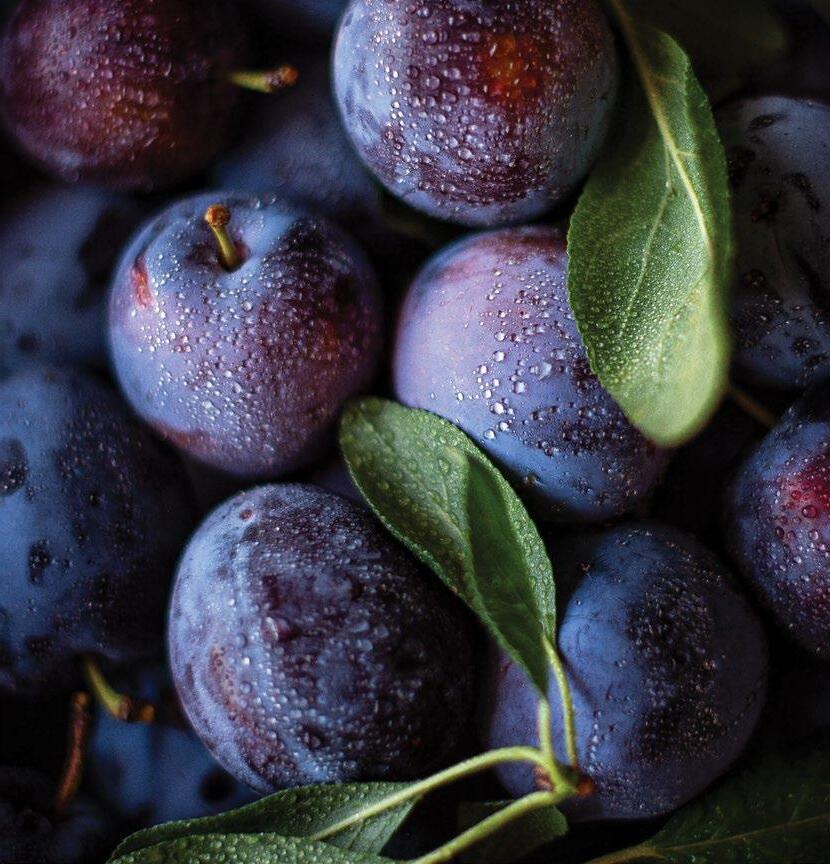
SCAN THE QR CODE TO LEARN MORE AND SIGN UP

Download the Live Life Well App from the Apple or Google Play Store to take the next step on your journey to wellbeing today!
JOHANNESBURG
204 on Oxford | 011 268 6403
Bassonia Shopping Centre | 010 746 4934
Benmore Centre | 011 883 3453
Dainfern Square | 010 495 7459
Harvest Place | 010 745 0748
Honeydew Village I 010 494 9028
Kingfisher Corner | 087 470 0931
Kyalami Corner | 011 468 1047
Lonehill Shopping Centre | 010 746 0230
Morningside | 011 784 1444
Winifred Mandela Precinct | 010 495 8741
Parktown Quarter | 011 327 6416
Riverside Shopping Centre | 011 463 2350
The Neighbourhood Square | 011 475 1914
Verdi Shopping Centre I 010 494 9027
Village View | 011 450 0000



Brooklyn Mall | 012 460 9159
Castle Gate Lifestyle Centre I 012 492 9958
The Grove Mall | 012 807 5445
Central Square Menlyn Maine | 012 348 4444
Southdowns Centre | 010 109 6431
Woodlands Boulevard | 012 997 3022
3Arts Village | 087 470 0930
Canal Walk | 021 180 2605
Cape Quarter | 021 425 7007
Cavendish Square | 021 673 7200
Constantia Emporium | 021 795 1386
Drakenstein Sentrum | 021 569 5352
The Village Square | 021 492 7821
Gardens | 021 465 8787
Glengarry Shopping Centre | 021 981 2099
Howard Centre | 021 532 1186



Majik Forest | 087 470 0932
The Paddocks | 021 551 6335
The Point Mall | 021 434 0460

Palmyra Junction | 021 671 2363
Plattekloof Village | 021 558 7106
Somerset Mall | 021 850 0001
Steenberg Village | 021 702 0013

Stellenbosch Square | 021 569 5558
Piazza St Johns | 021 433 0971
Table Bay Mall | 021 276 2252
Waterfront | 021 421 2020
Waterstone Village | 021 569 5594






Ballito Junction | 032 586 2363
Delcairn | 031 764 1846
La Lucia Mall | 031 350 3386
Westville Mall | 031 266 0263
Gateway | 031 110 0997


Warren Ingram I Penguin Random House
A pragmatic and empowering guide to achieving significant personal and financial growth through manageable, incremental steps. Ingram's clear and concise writing makes complex financial concepts accessible, offering readers practical strategies for improving their financial health without feeling overwhelmed. The book emphasises the importance of consistency and the cumulative impact of small, positive changes, providing actionable advice that can be easily integrated into daily life.
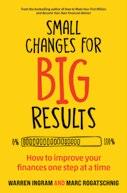
Scott Shigeoka I Pan Macmillan
A thought-provoking exploration of curiosity and its transformative power in our lives. Shigeoka blends personal anecdotes, insightful interviews, and practical advice to illustrate how embracing curiosity can lead to deeper connections, greater creativity, and a more fulfilling life. His engaging writing style makes complex concepts accessible, encouraging readers to question assumptions and seek out new experiences with an open mind. A compelling guide for anyone looking to enrich their personal and professional life through the power of curiosity.

Teresa Ulyate I NB Publishers
An evocative historical novel that transports readers to a vivid and tumultuous past. Malye's meticulous research and lyrical prose bring to life the story of young women, known as the Pelican Girls, who journey to the New World in the early 18th century. The novel delves into the themes of courage, survival, and the search for freedom as these women face the harsh realities of their new environment. Rich in historical detail and emotional depth, it’s a captivating read that offers a fresh perspective on a lesser-known chapter of history.
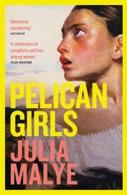
Marian Keyes I Penguin Random House

A delightful and heart-warming novel that showcases Keyes' signature blend of humour, wit, and emotional depth. The story follows a relatable protagonist through a series of missteps and unexpected turns, ultimately leading to profound personal growth and self-discovery. Keyes' sharp and engaging writing captures the complexities of relationships and the often messy journey to finding one's true self. With its charming characters and insightful narrative, My Favourite Mistake is an entertaining and uplifting read that resonates with anyone who has ever stumbled on the path to happiness.
Erin Kelly I Hodder & Stoughton

A gripping and atmospheric thriller that keeps readers on the edge of their seats from start to finish. Kelly masterfully weaves together past and present narratives, creating a sense of intrigue and suspense that builds with each twist and turn. The haunting setting of an abandoned seaside amusement park adds to the novel's eerie atmosphere, serving as the perfect backdrop for the dark secrets and hidden agendas that unfold. With its complex characters and intricately plotted storyline, The House of Mirrors is a captivating read that will leave readers guessing until the very end.
Rachelle Unreich I Pan Macmillan

The powerful, true story of a Holocaust survivor told by her daughter, A Brilliant Life is a testament to resilience, hope, and healing. Unreich explores how her mother has lived through four concentration camps, including Auschwitz, and a Death March. Displaying unbelievable faith, it questions the role that fate, chance, and destiny play in a life, and inspires with its call to action to find the goodness of people in the midst of the worst cruelty.
Alain de Botton I Penguin Random House
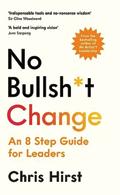
A refreshing and straightforward guide to navigating and implementing change in both professional and personal contexts. Drawing from his extensive leadership experience, Hirst cuts through the jargon and offers practical, no-nonsense advice that is both accessible and actionable. His candid and relatable writing style makes the book an engaging read, filled with real-world examples and clear strategies that demystify the oftendaunting process of change.
Michael Greger, MD I Pan Macmillan

An insightful and meticulously researched guide to understanding the science of longevity and healthful living. Greger, renowned for his evidence-based approach, offers practical advice rooted in nutritional science and lifestyle medicine, aiming to empower readers with actionable steps to enhance their quality of life as they age. His engaging writing style, coupled with a wealth of scientific references, makes complex topics accessible and inspiring, encouraging readers to adopt healthier habits for a longer, more vibrant life.
SHOP THE BOOKS AT LEADING BOOK STORES OR ONLINE

We thoroughly enjoyed partnering with Greenpop in support of Reforest Fest at Bodhi Khaya Nature Retreat in April.
An annual highlight on the Greenpop calendar, Reforest Fest is an opportunity for people from all walks of life to come together to plant thousands of trees, attend interesting workshops, and enjoy local music.
Five thousand trees were planted at this year’s festival, and attendees enjoyed an array of interactive activities plus live entertainment from Jeremy Loops and friends.
It was an honour for us to sponsor the Wellness Food Village , championing local farmers and aligning festival vendors with Greenpop’s sustainability efforts to promote a holistic approach to wellness and environmental consciousness.
Want to join us at next year’s festival? Find Reforest Fest 2025 on Quicket to grab your ticket and meet us there!

Whether you’re after refreshment, energy, calm, or longevity, we’ve got your new favourite healthy cuppa. www . w ellness w a r e h ous e . c o m
